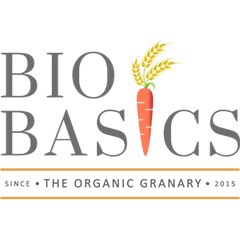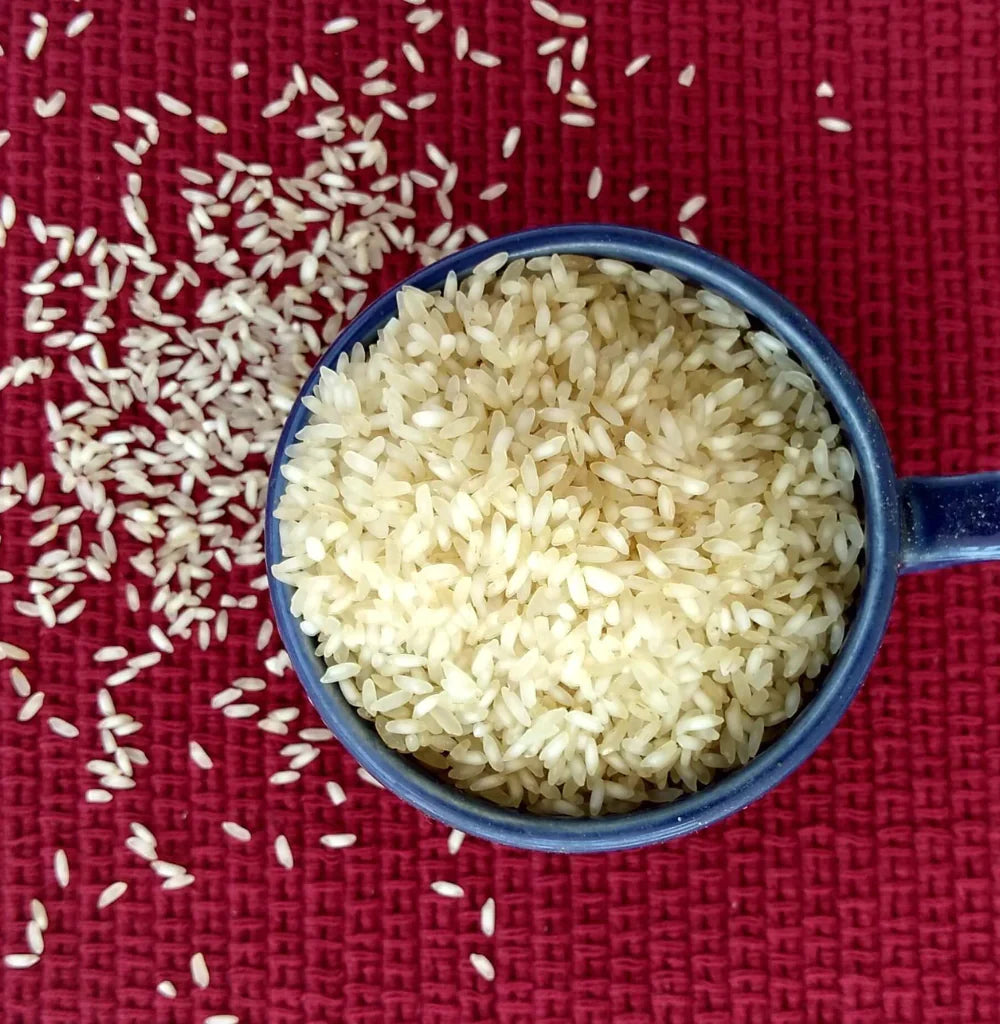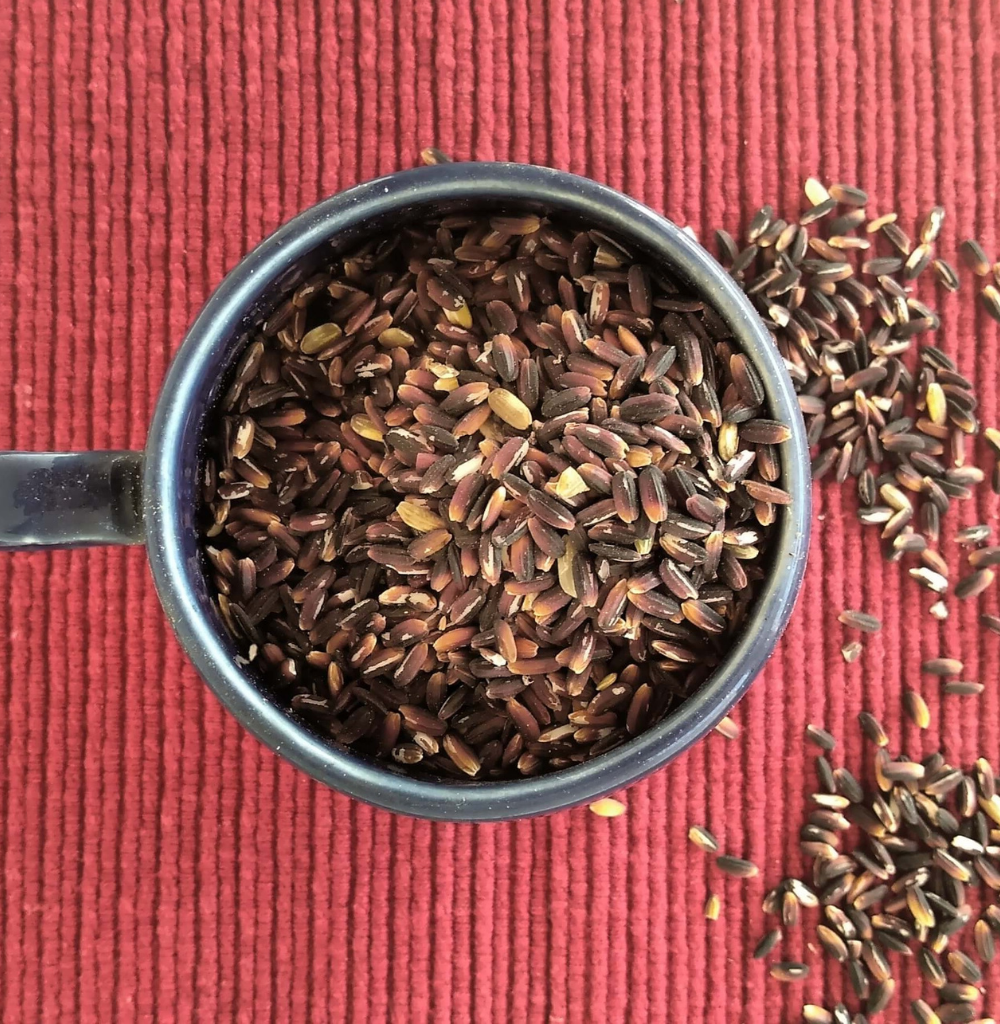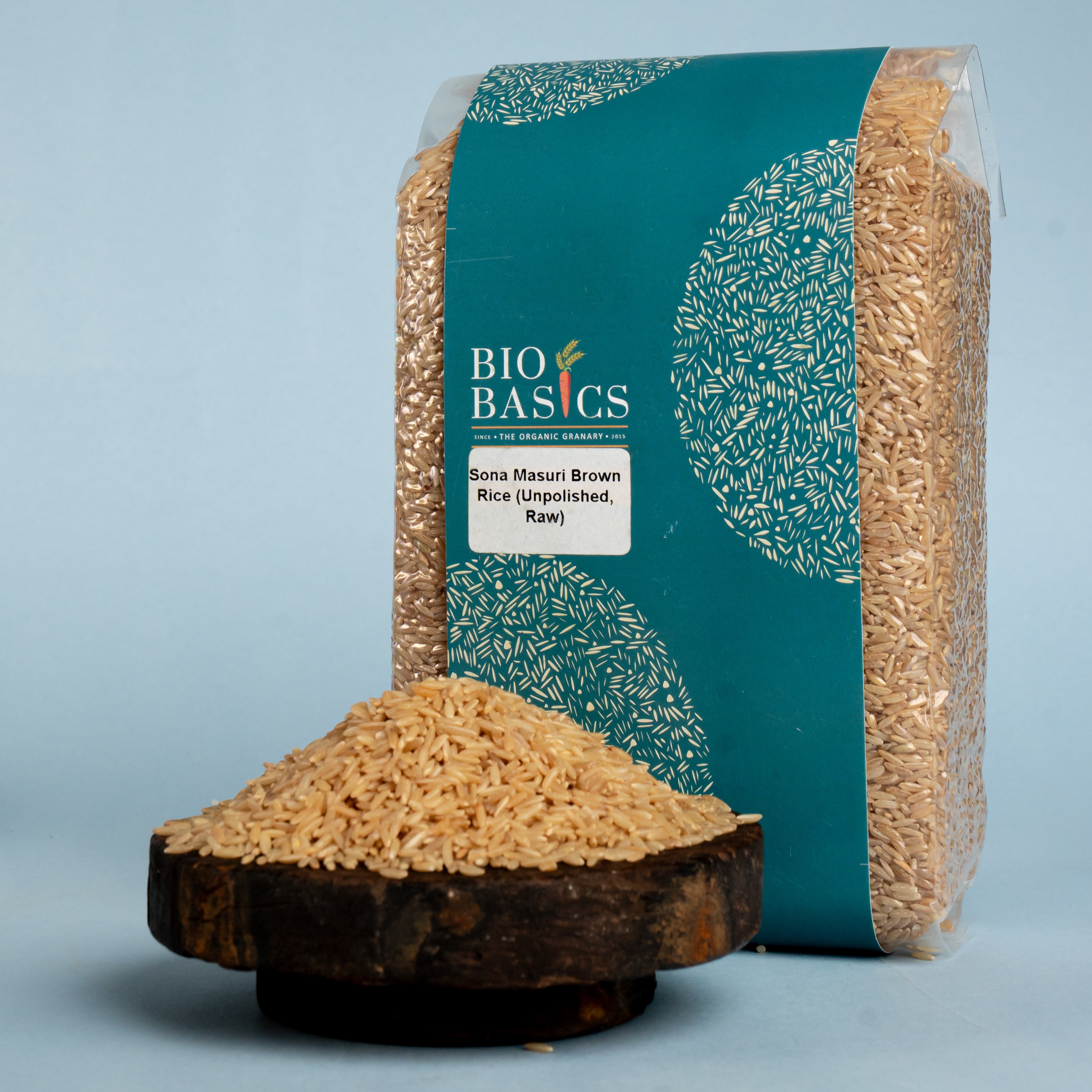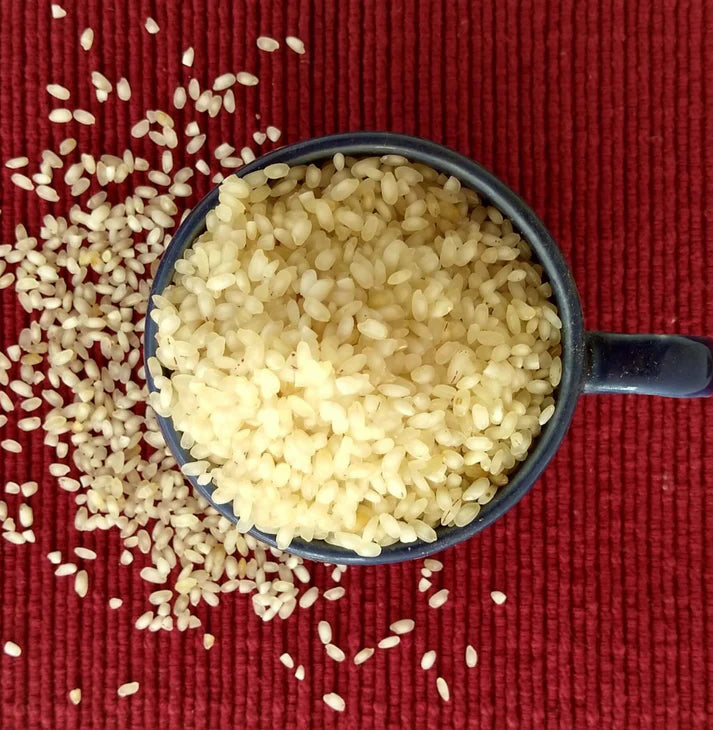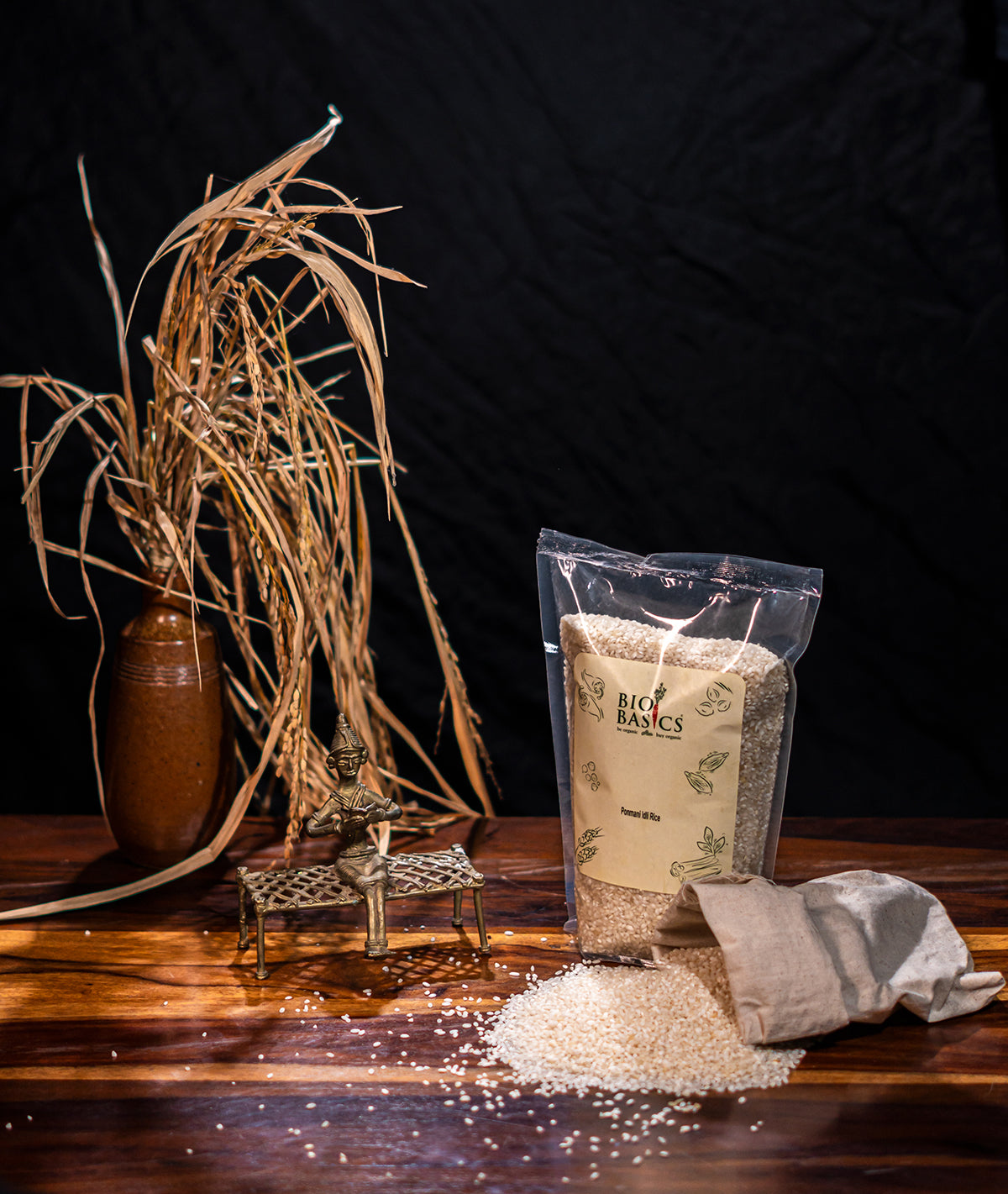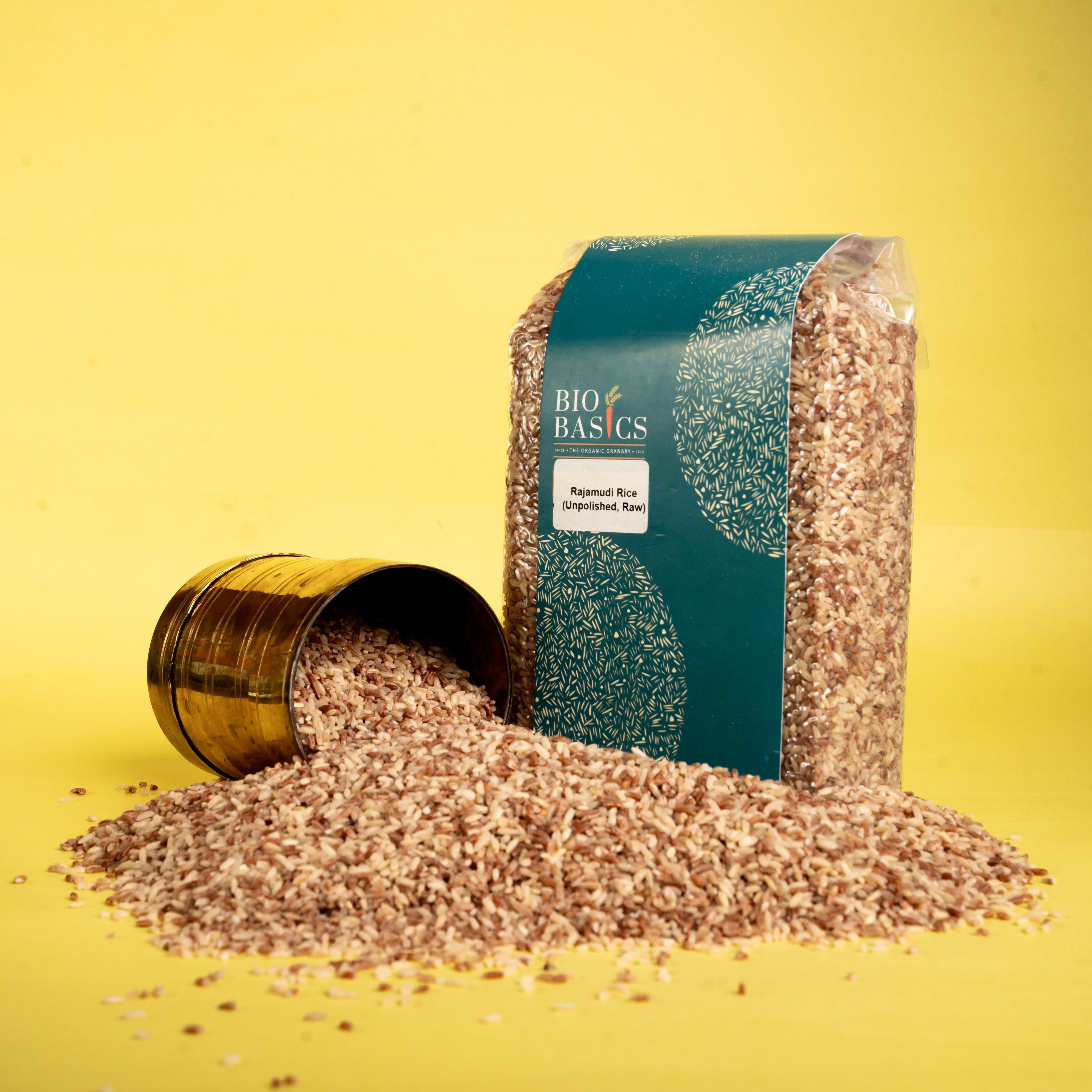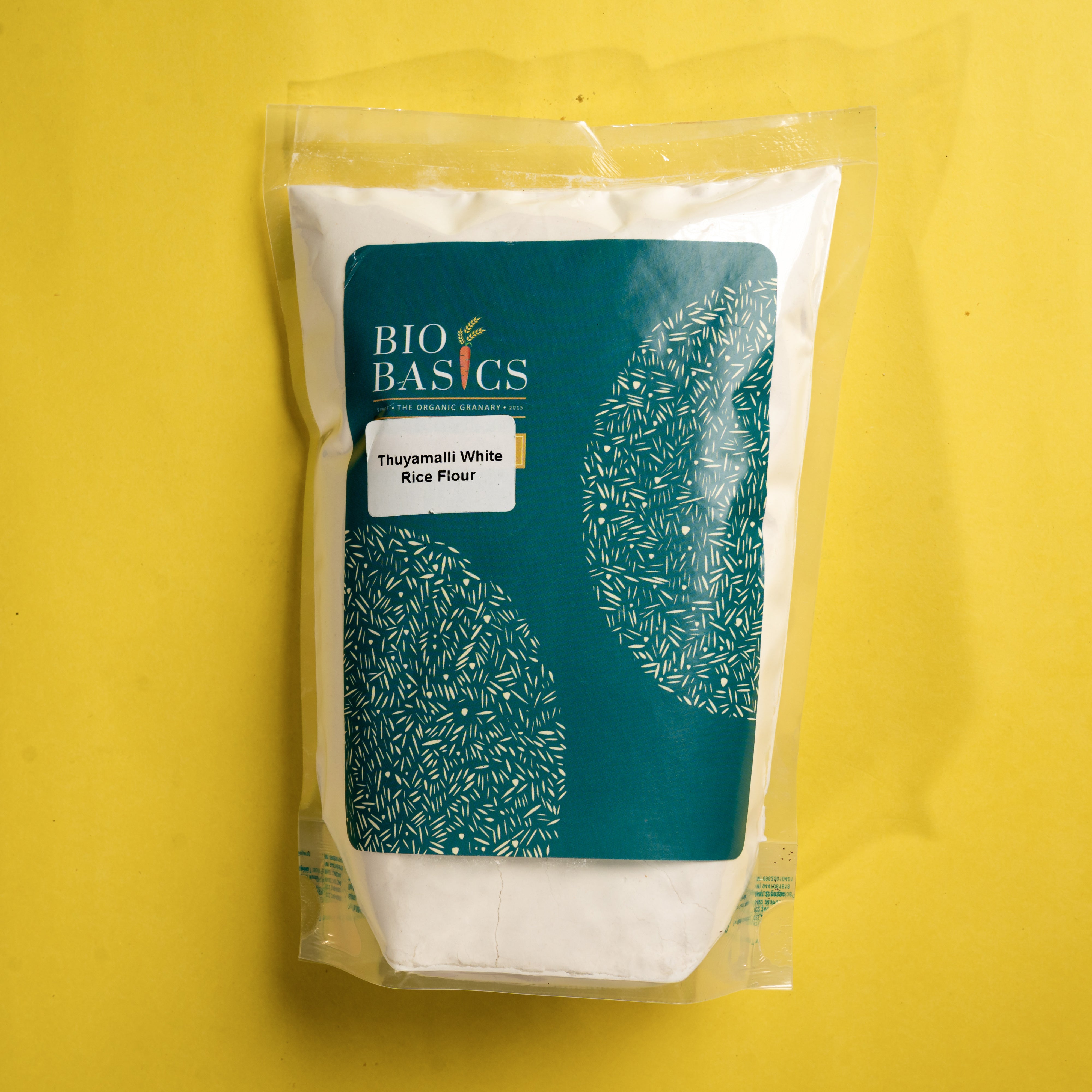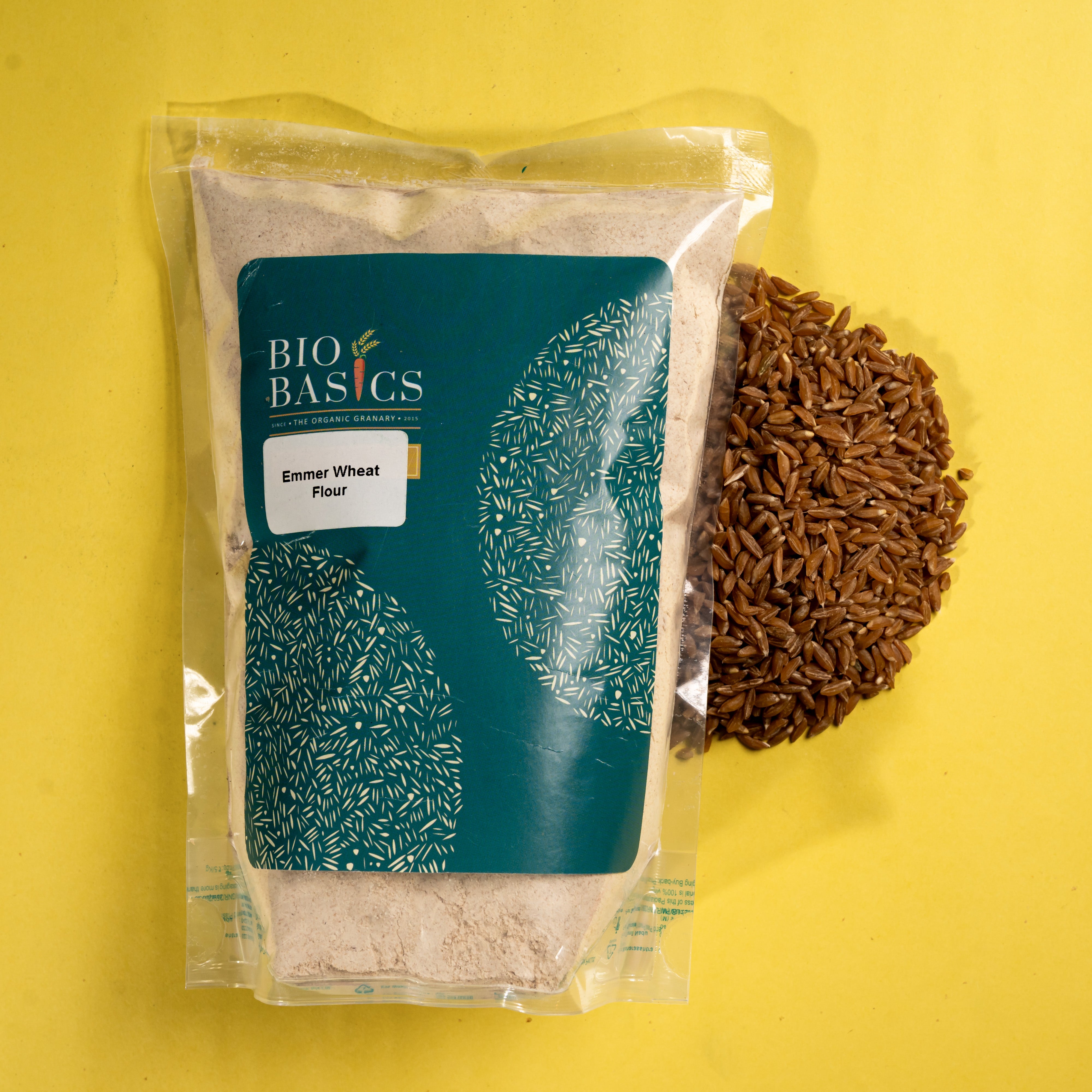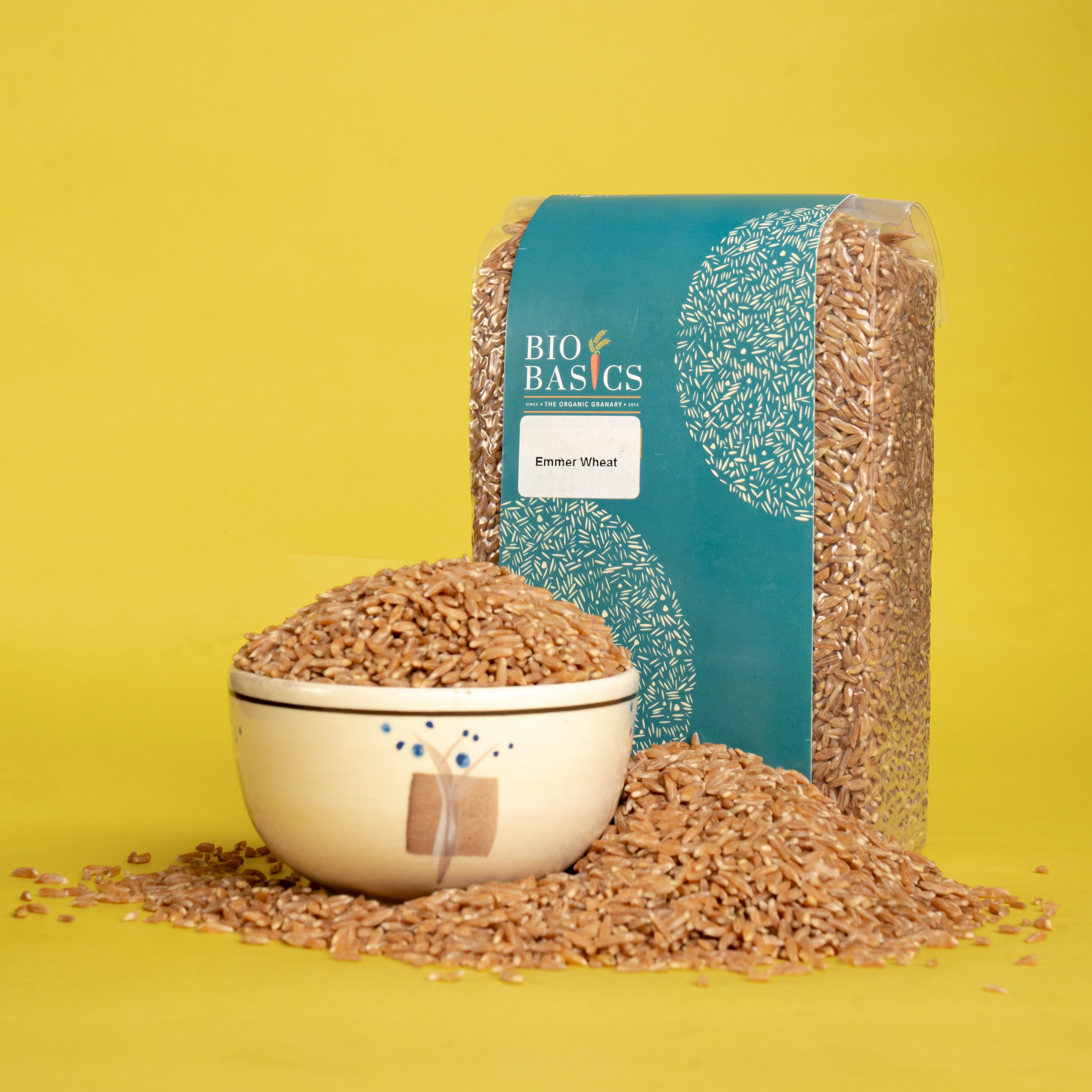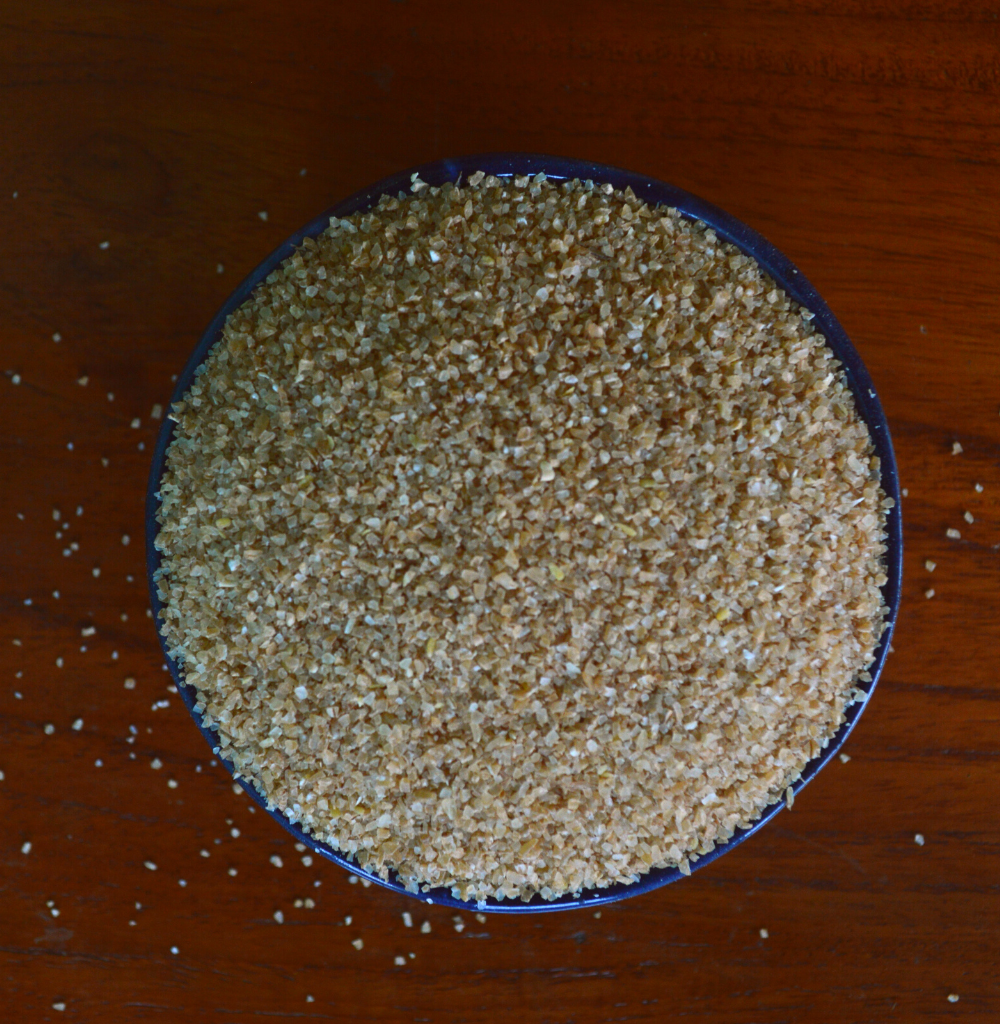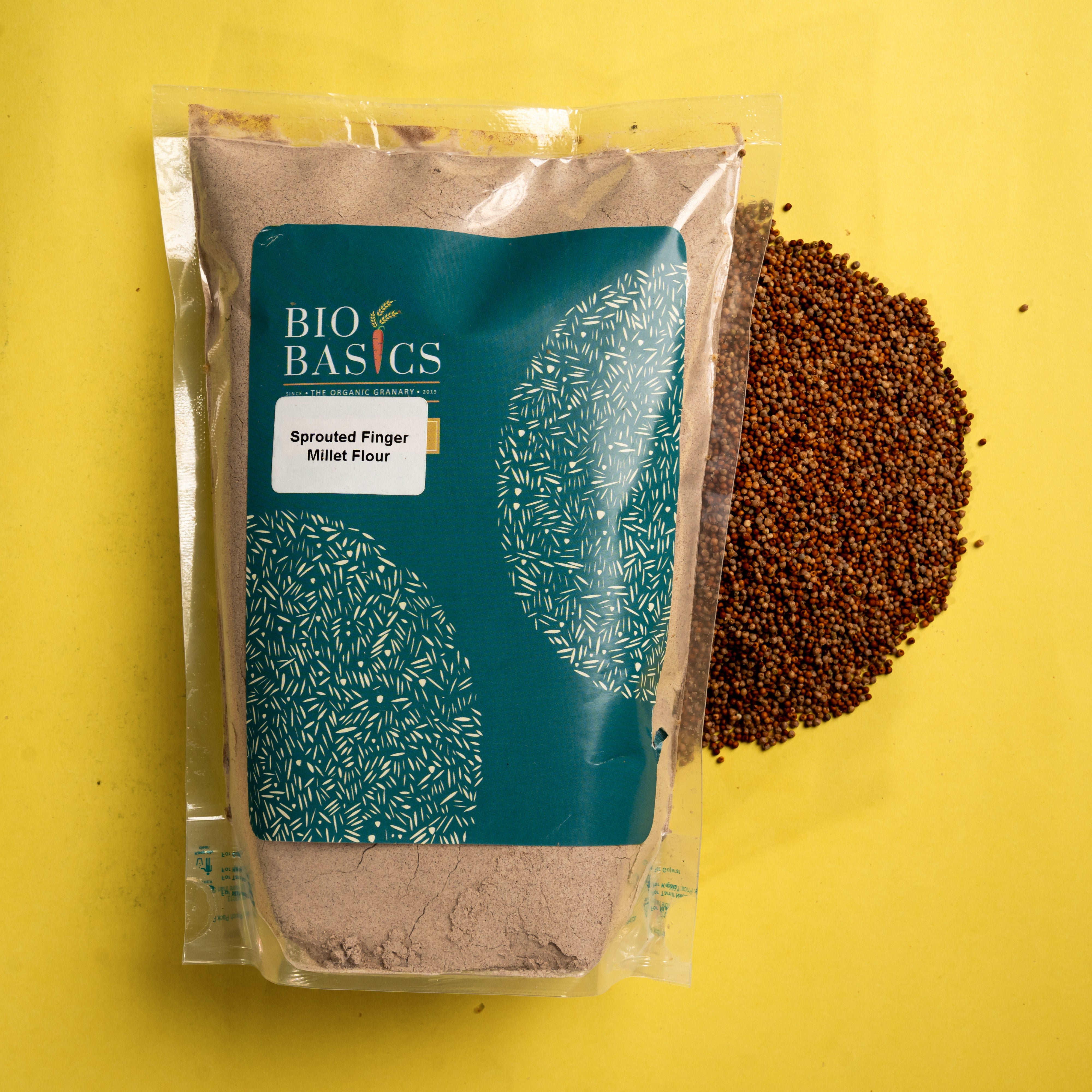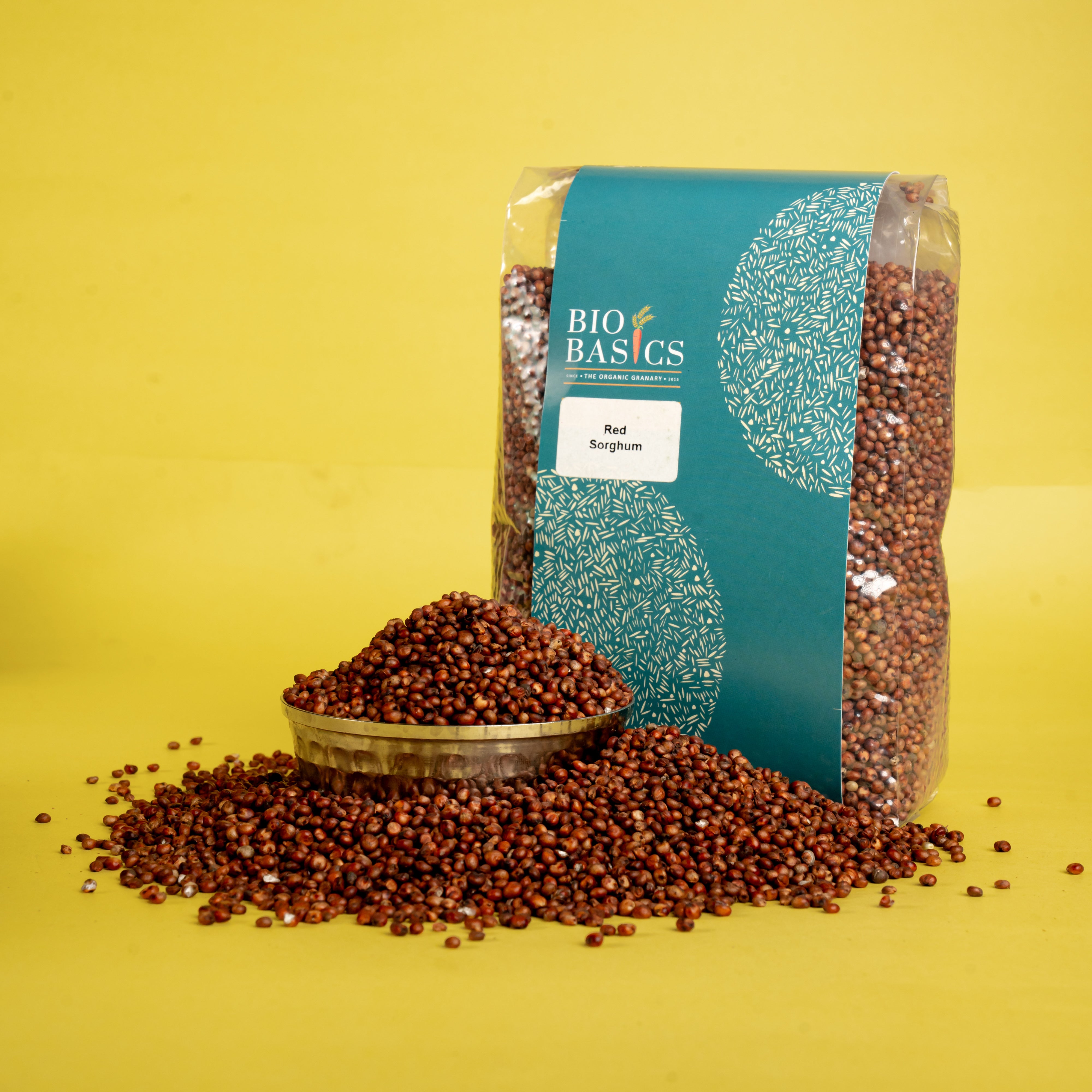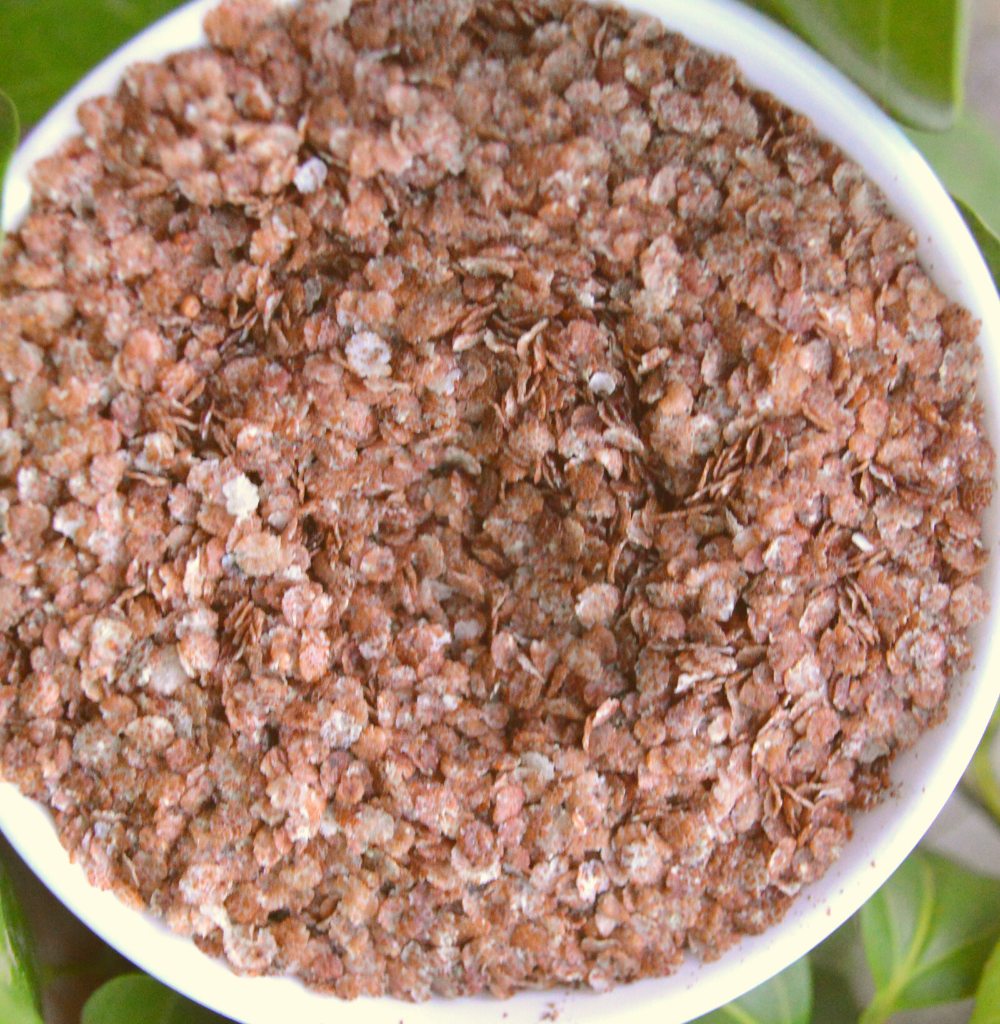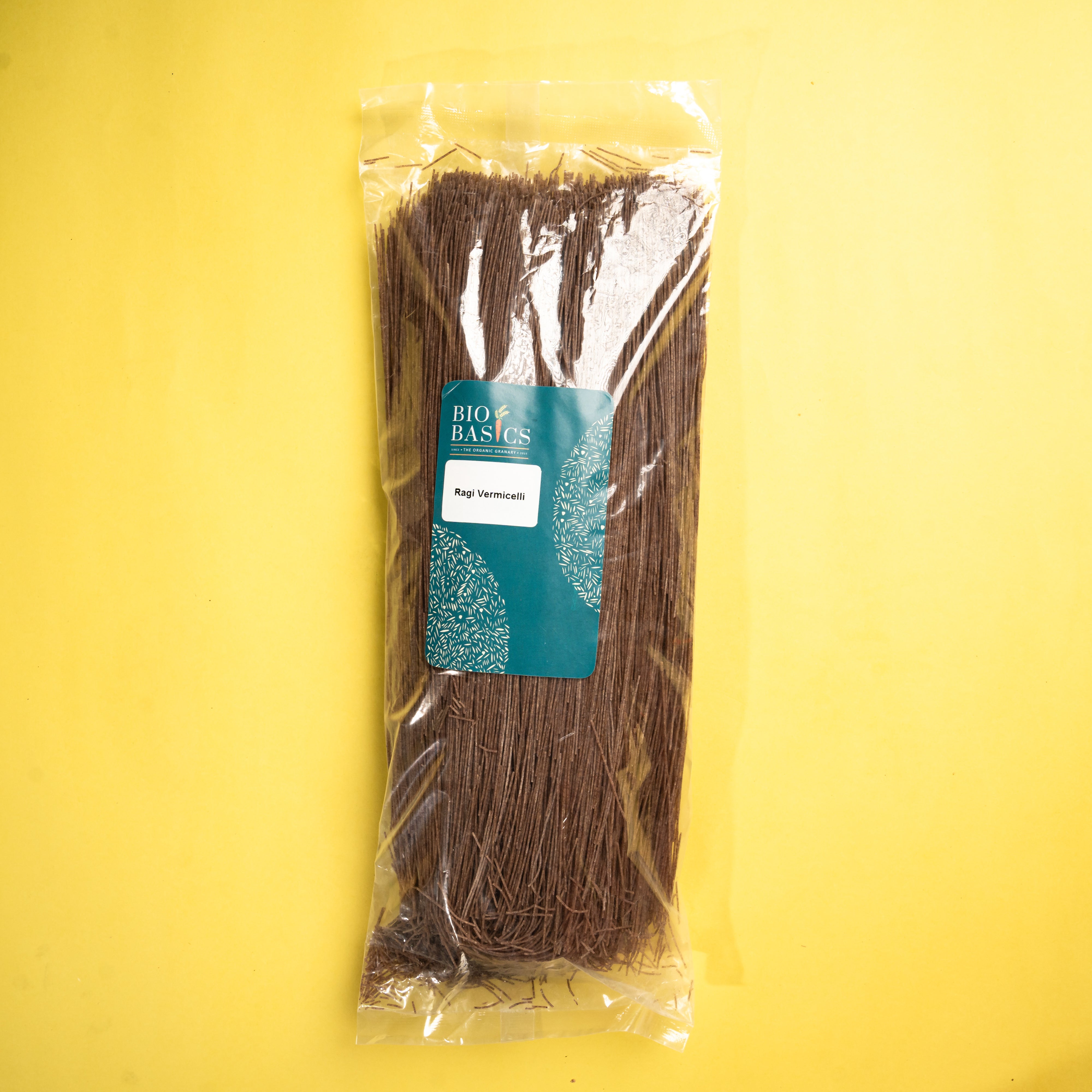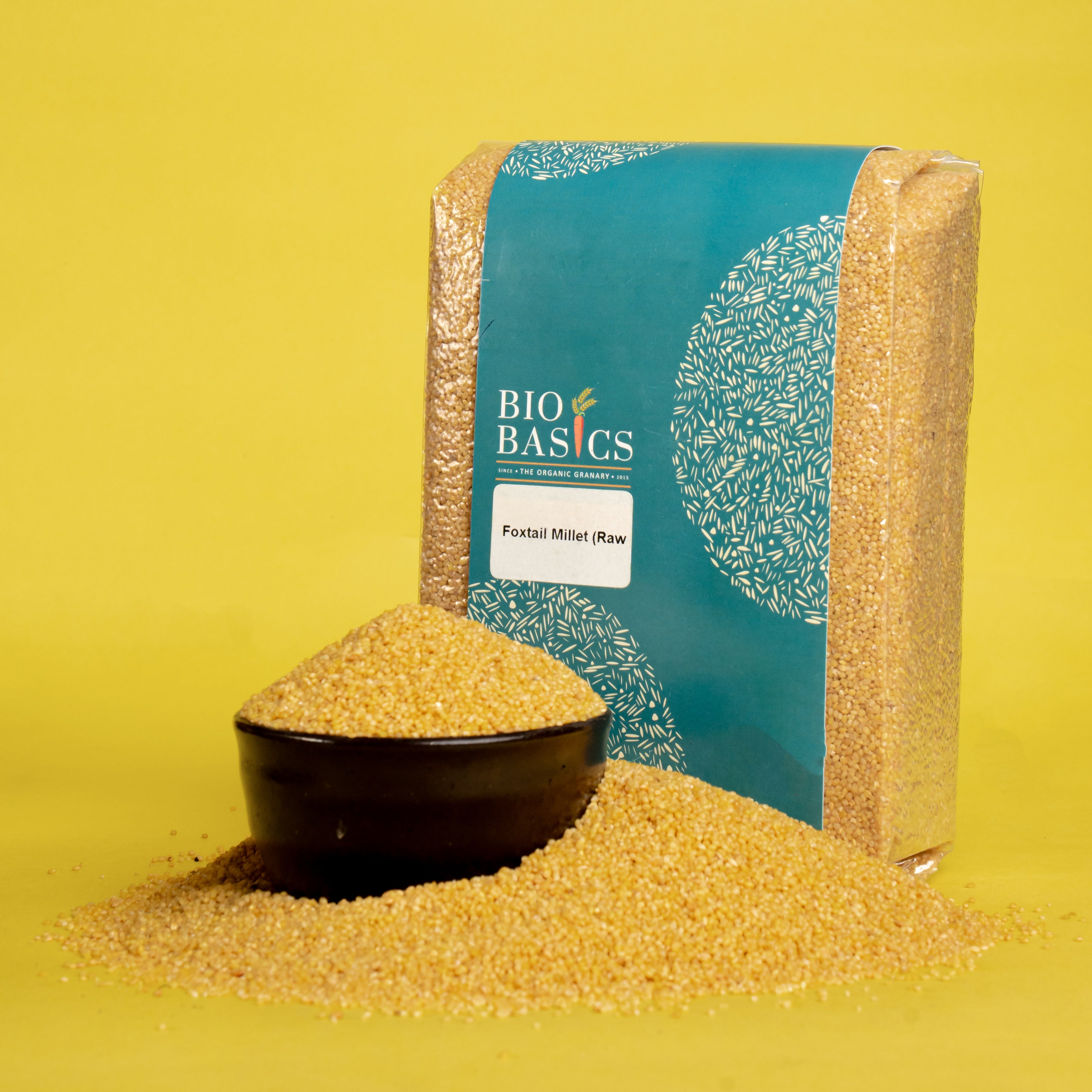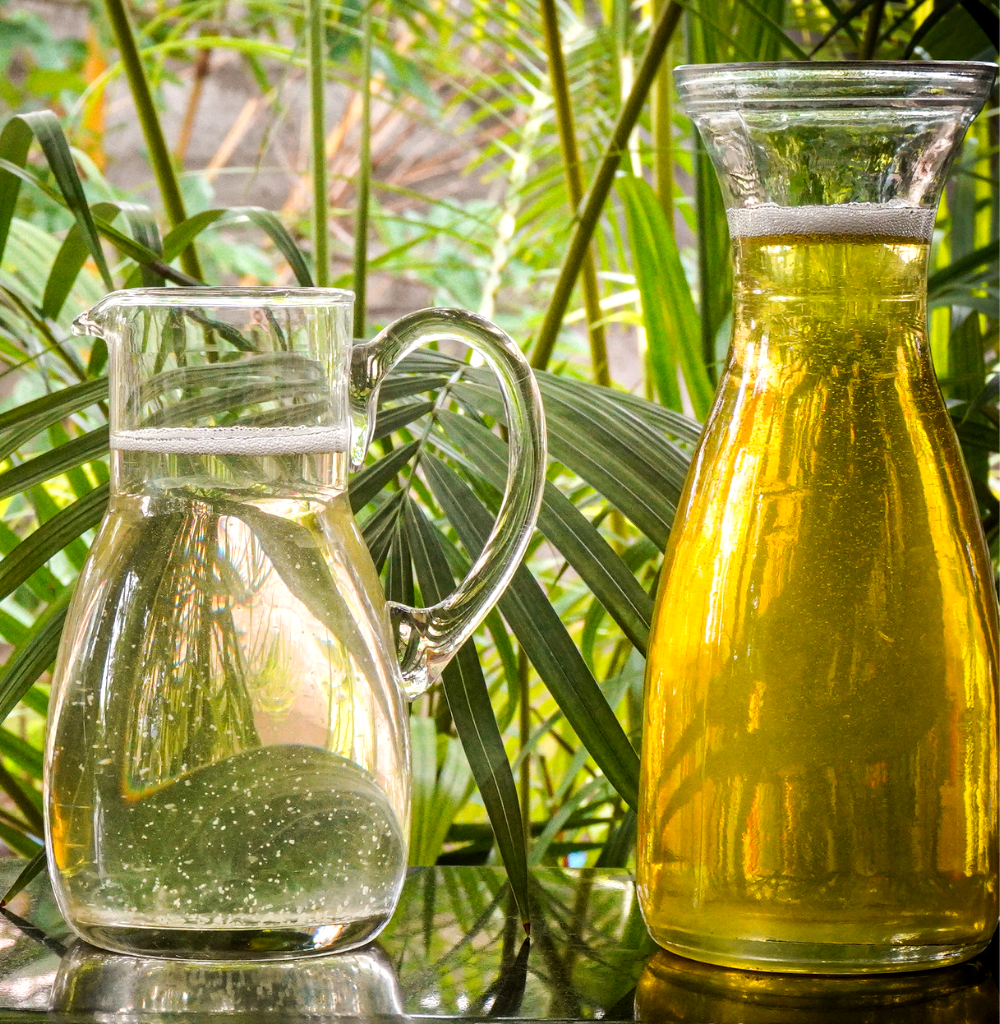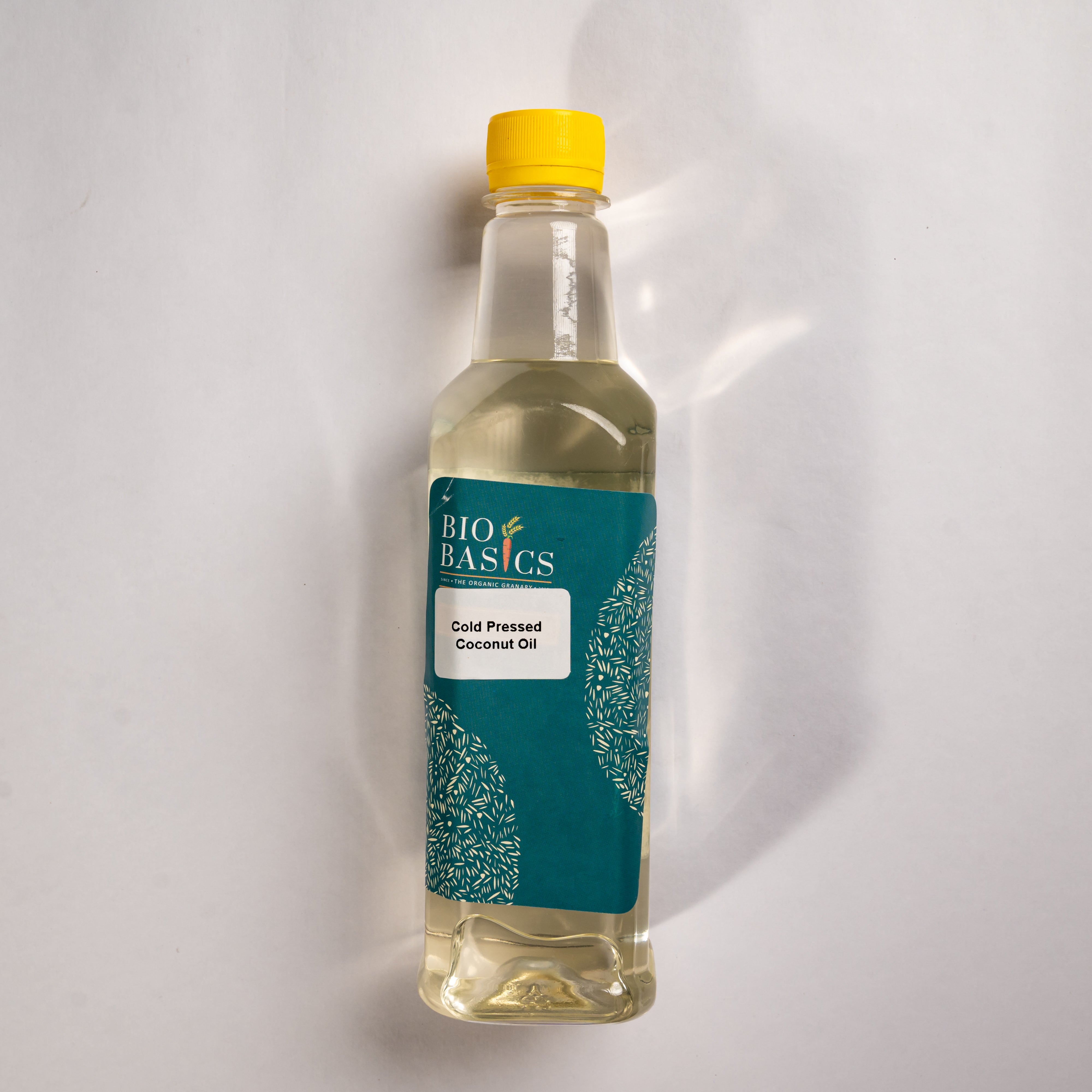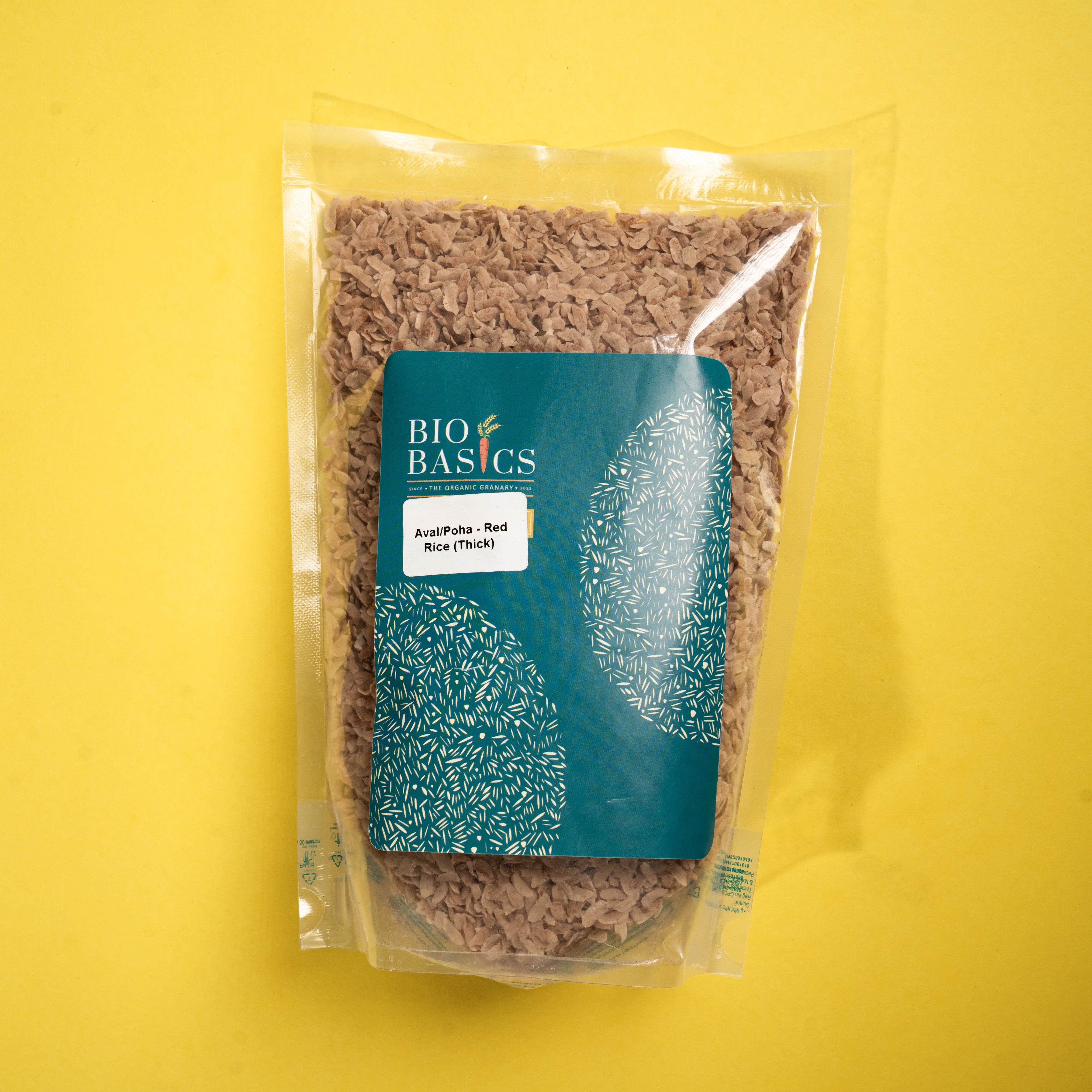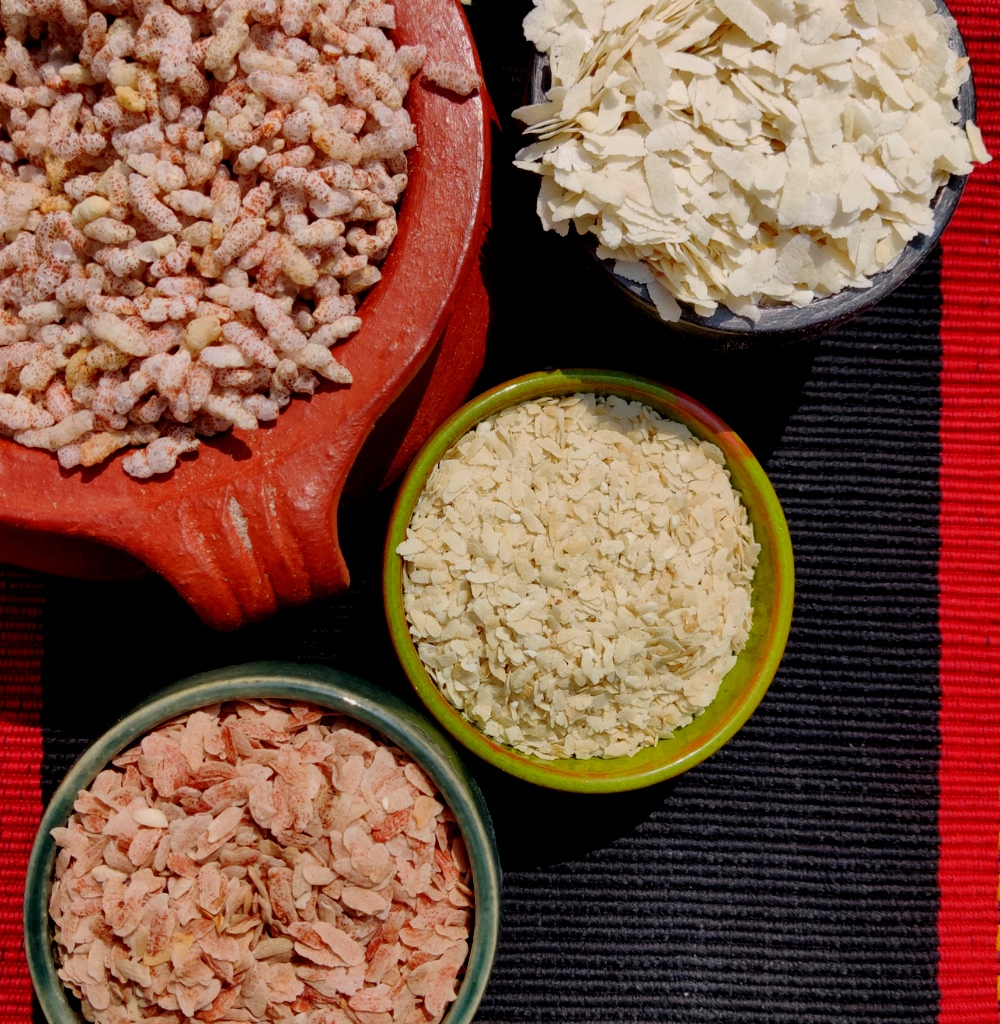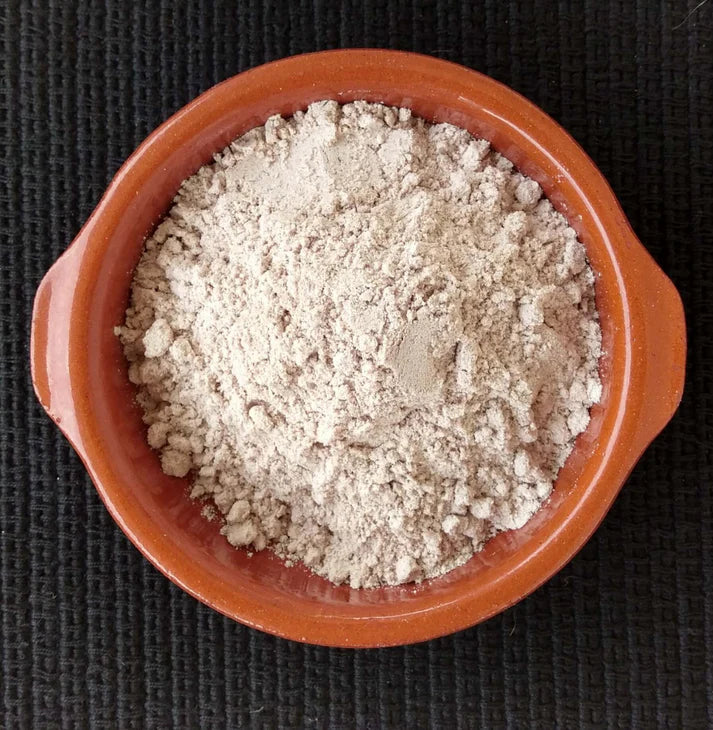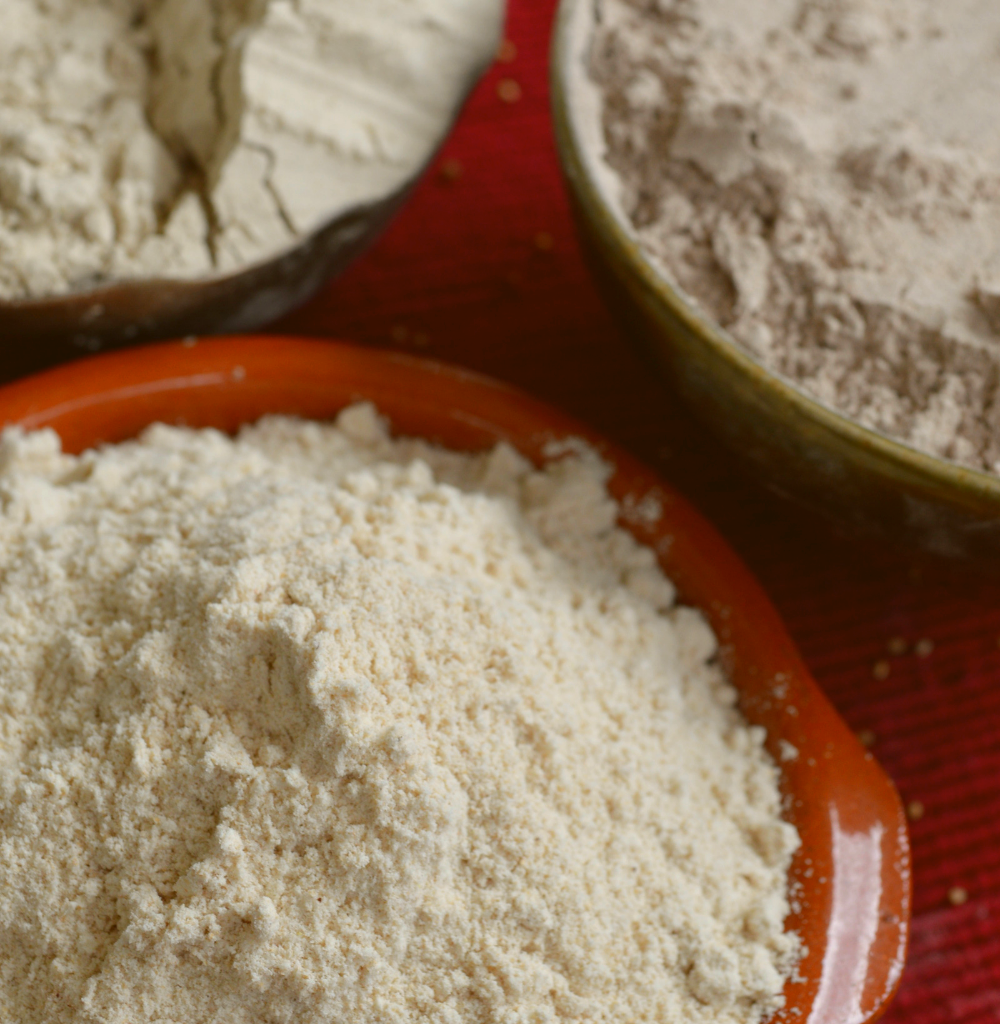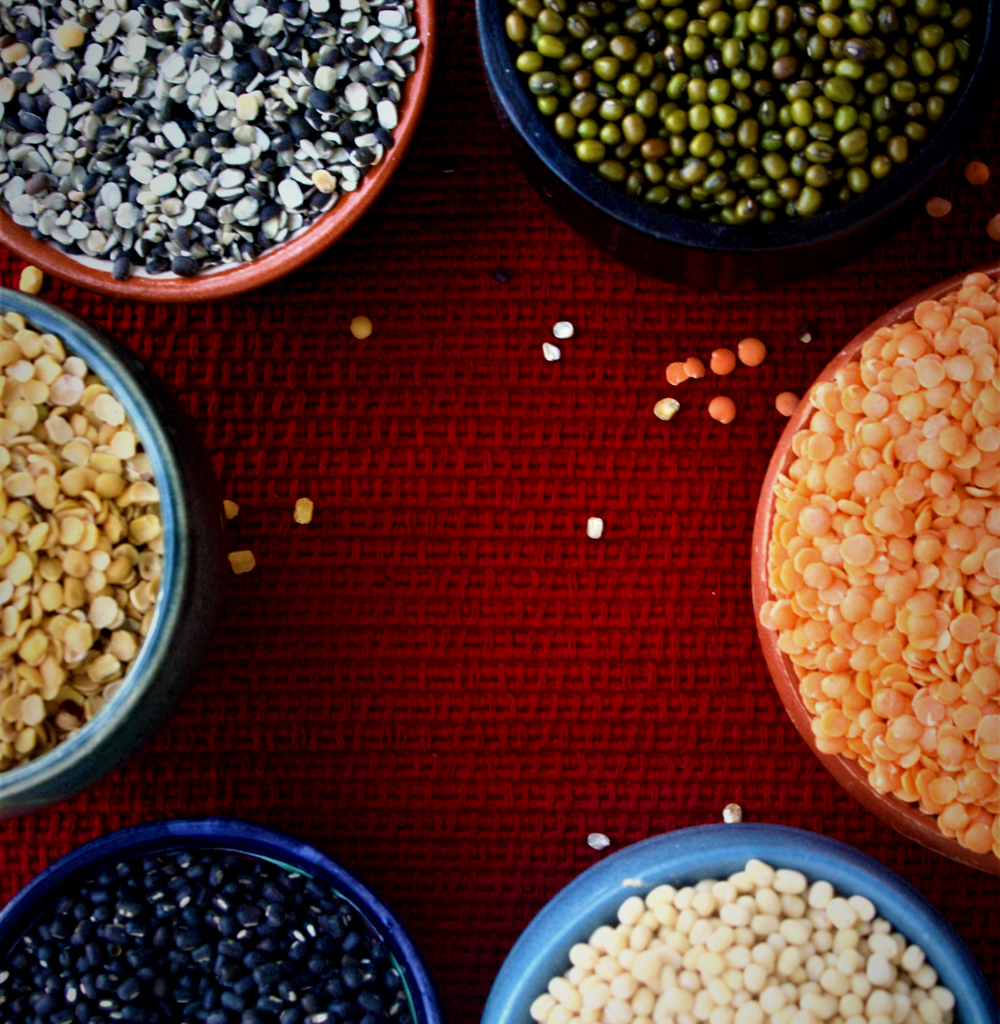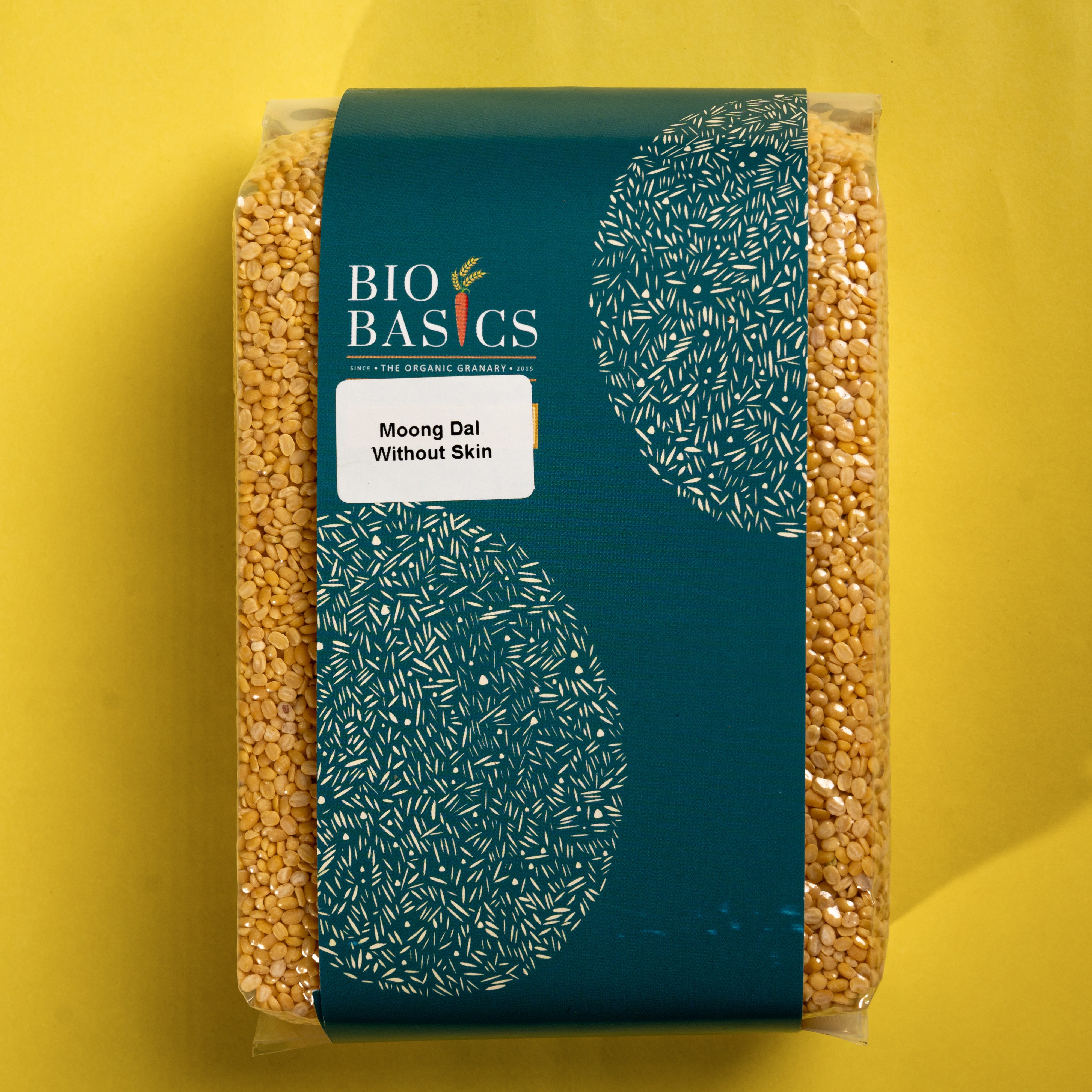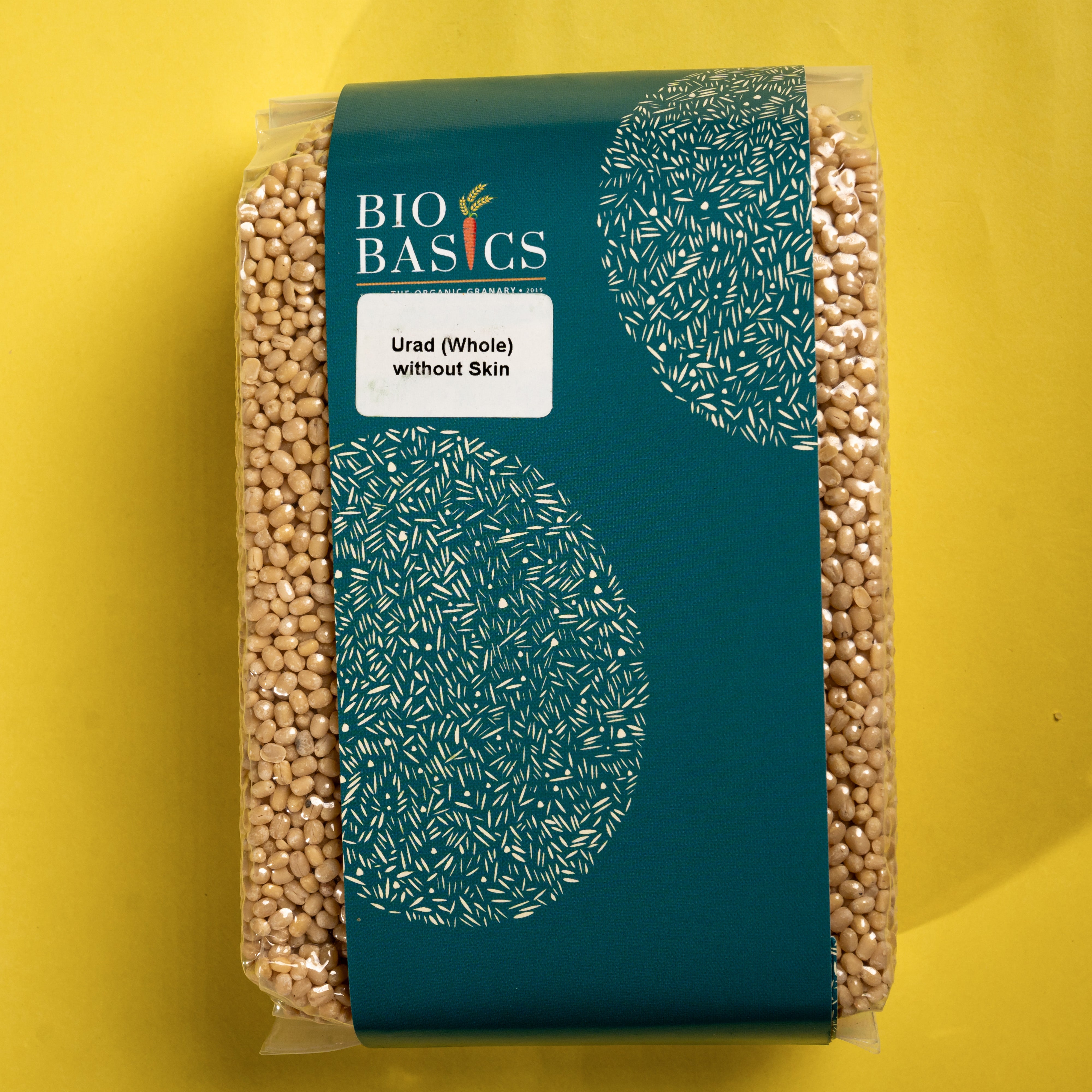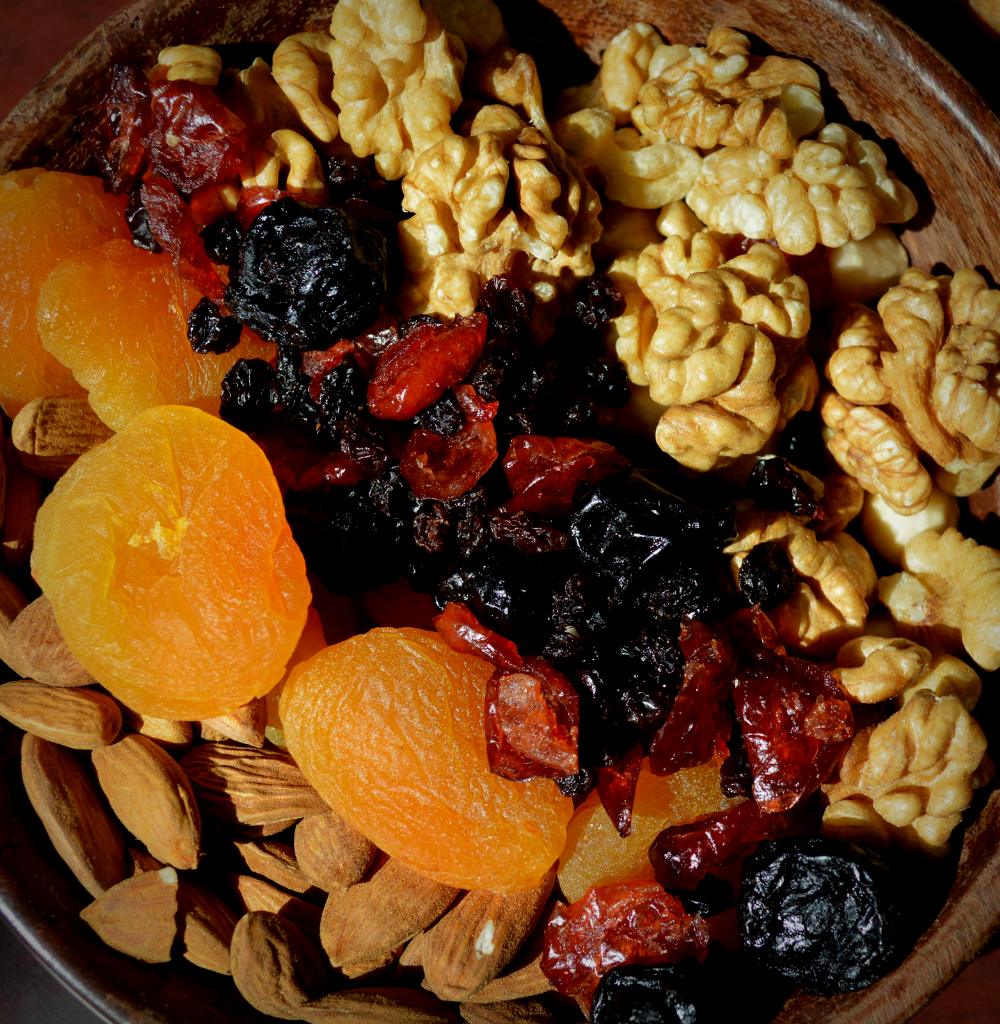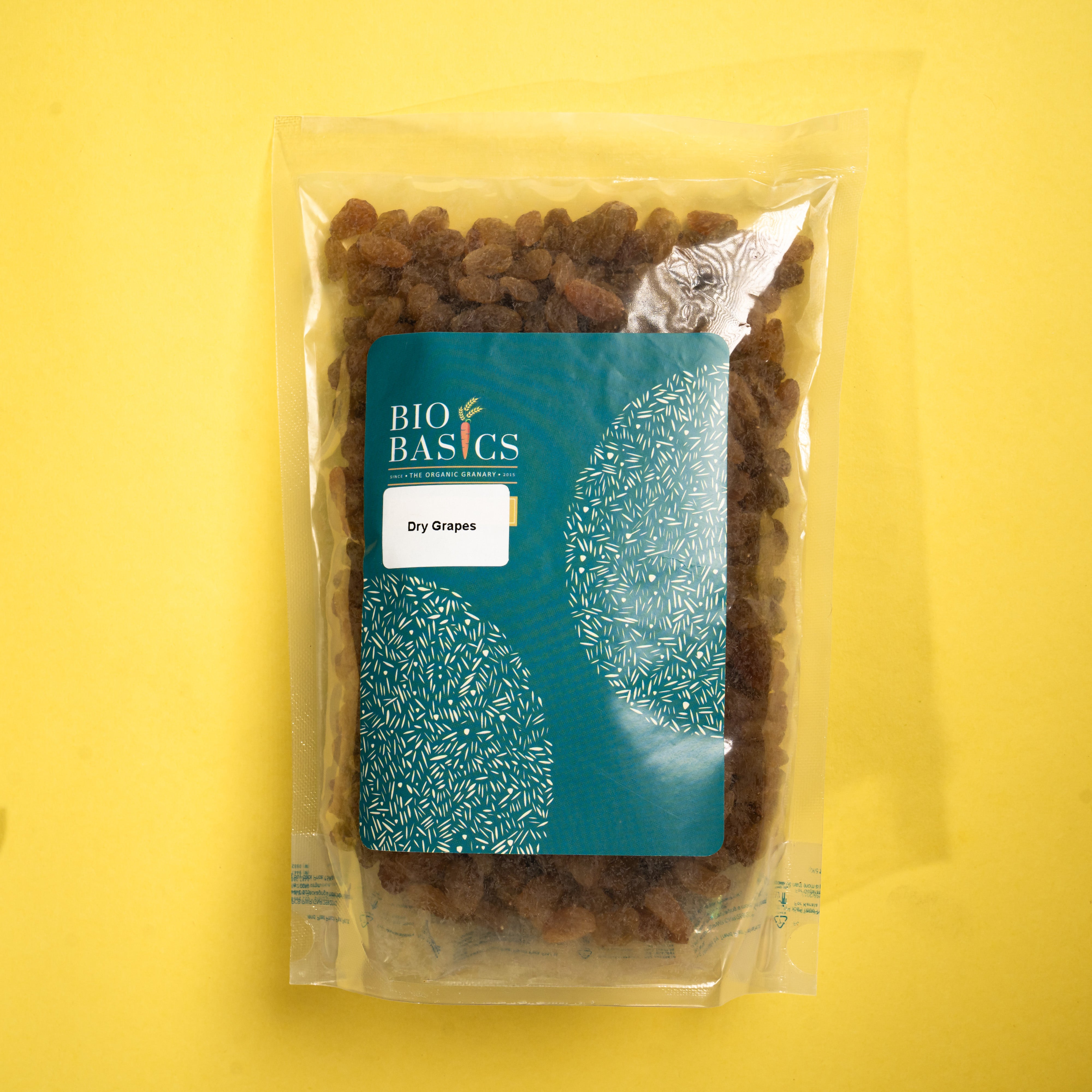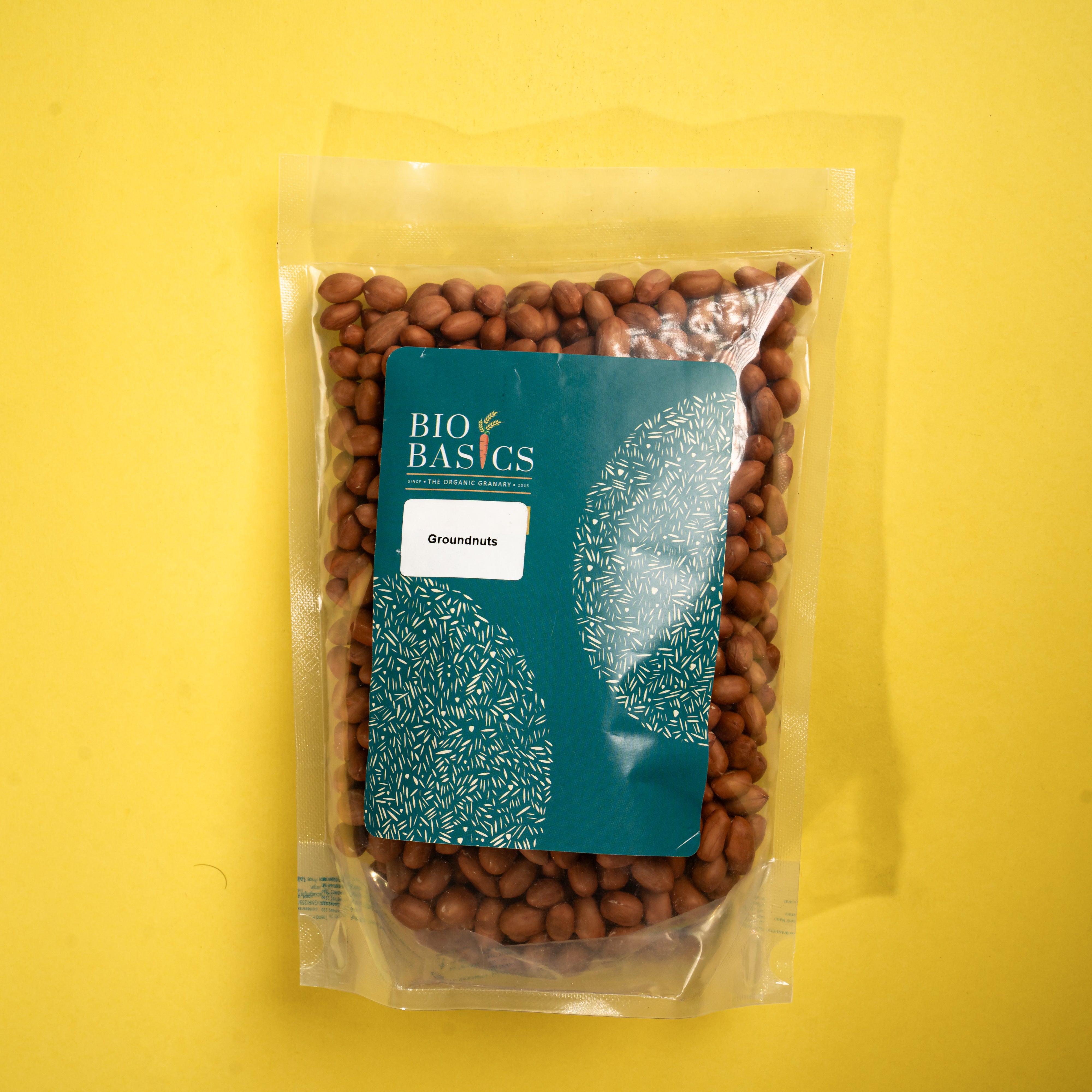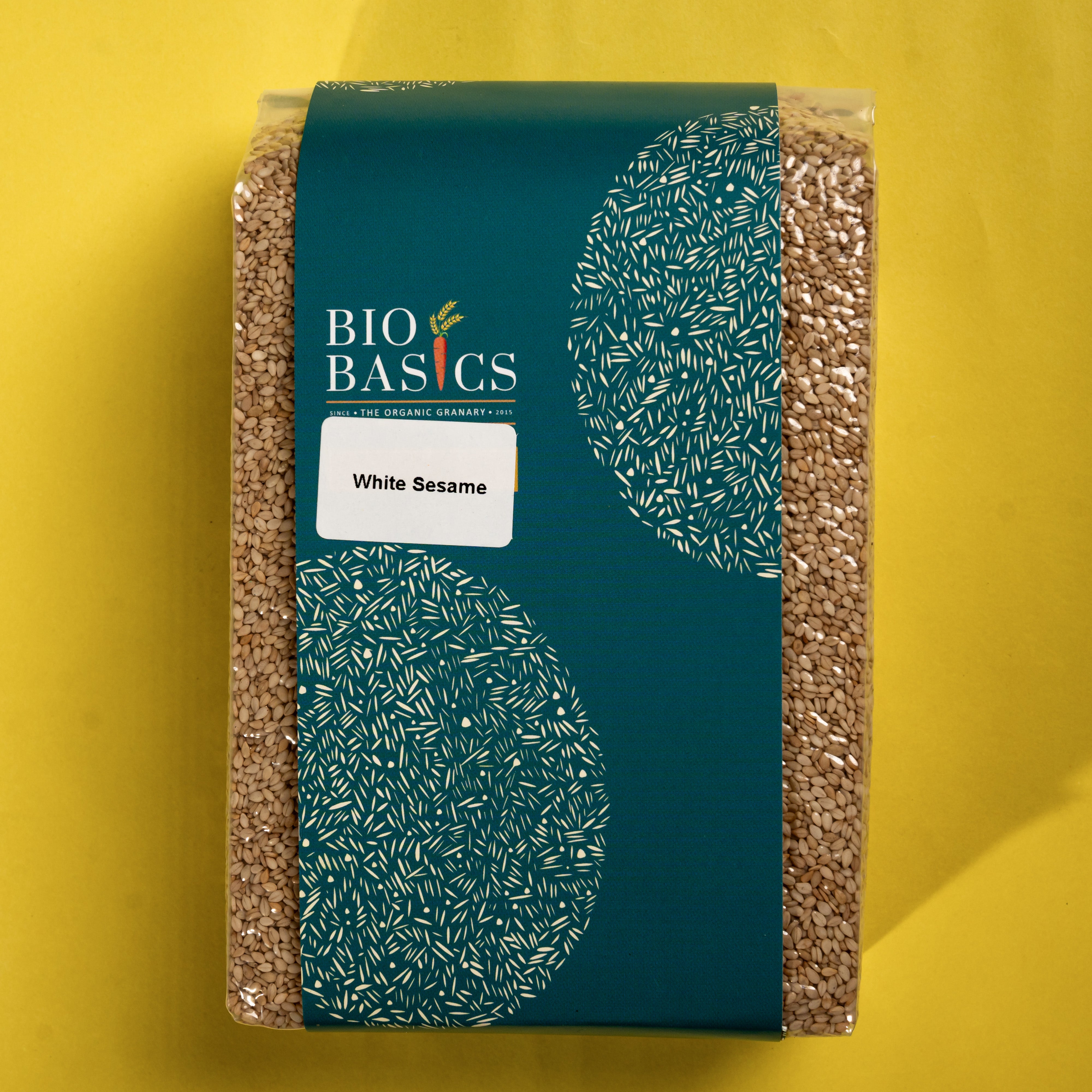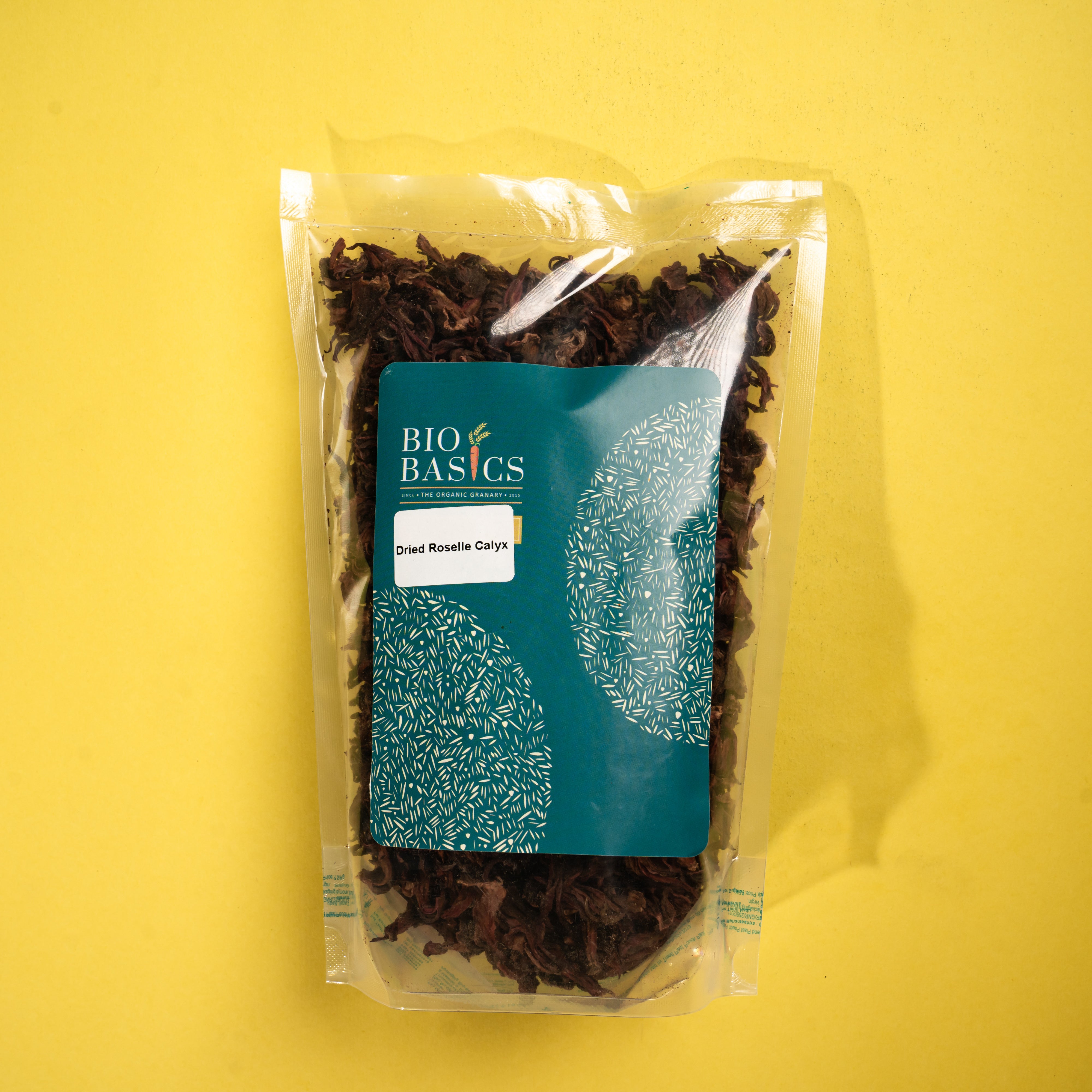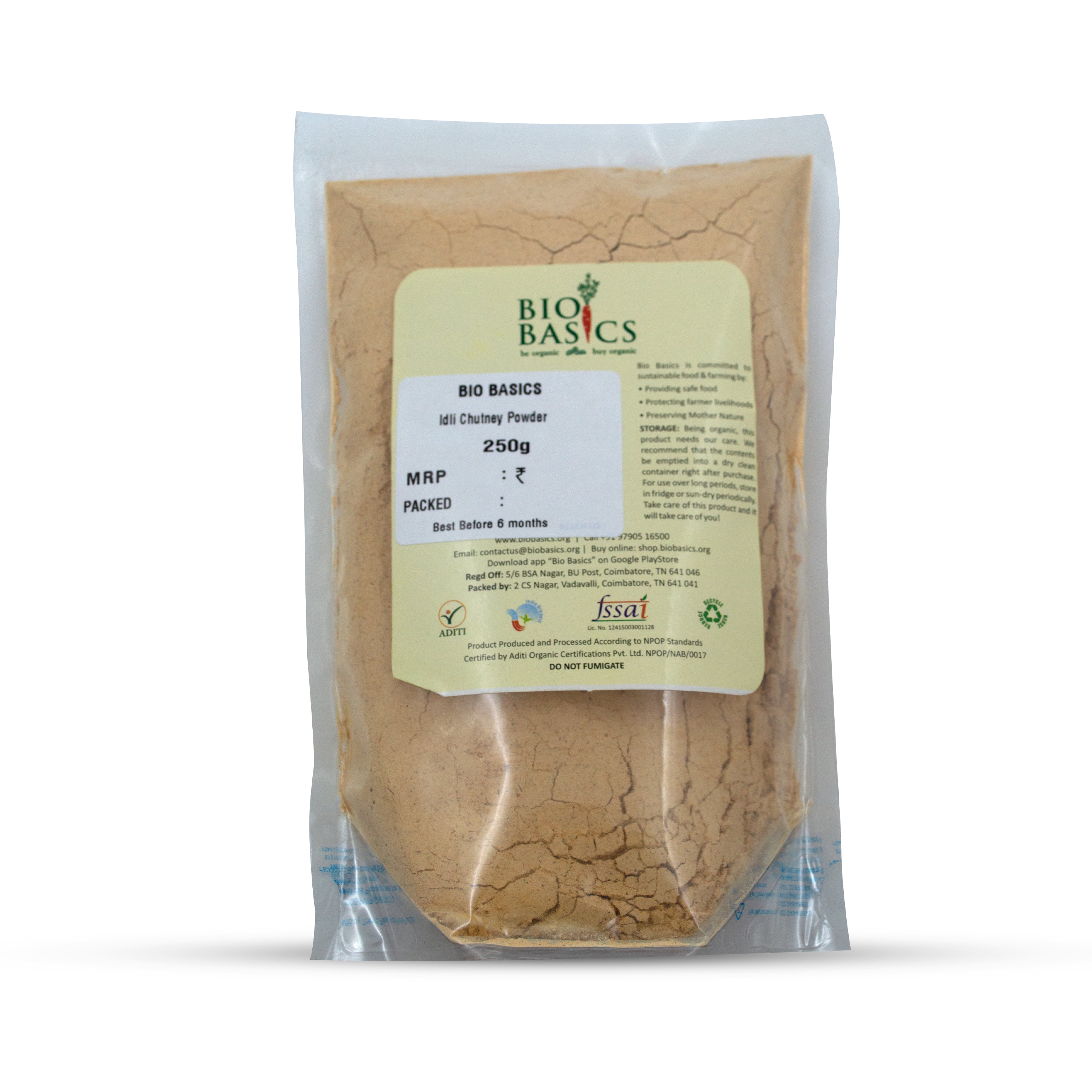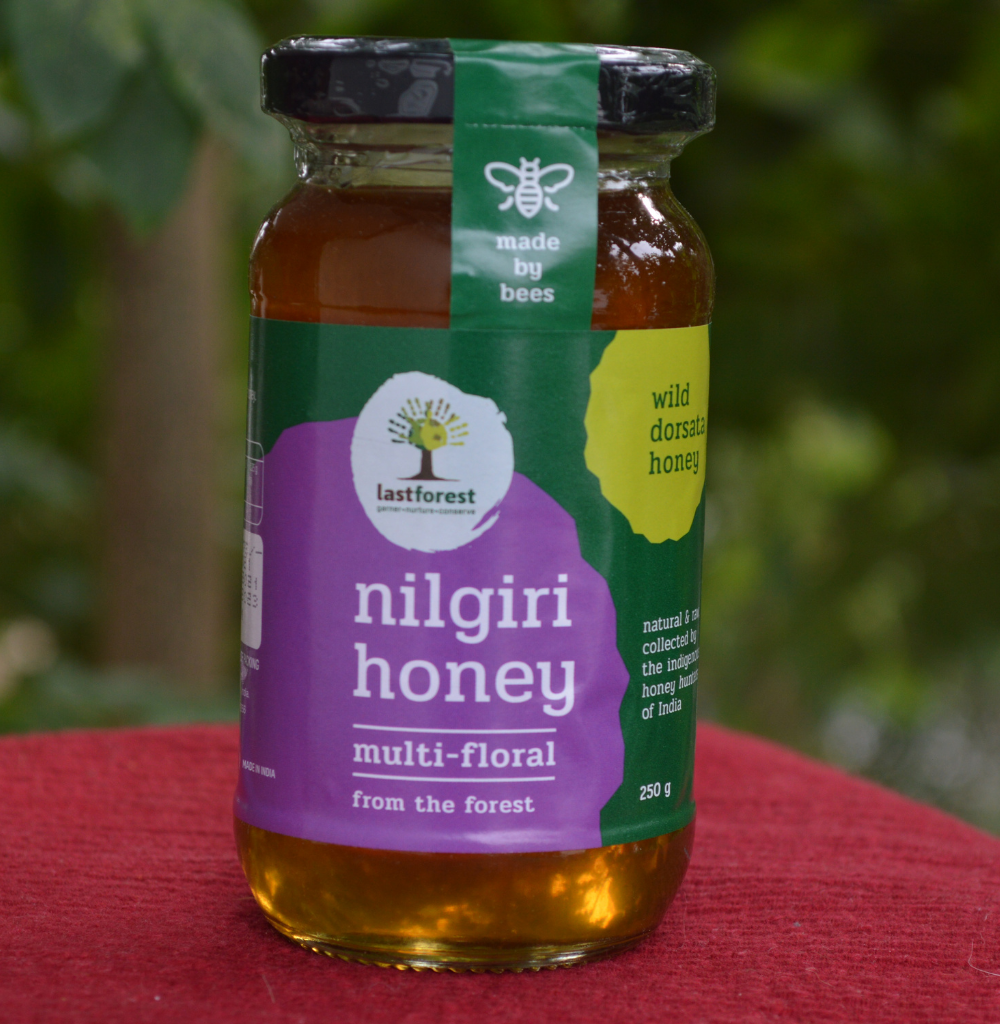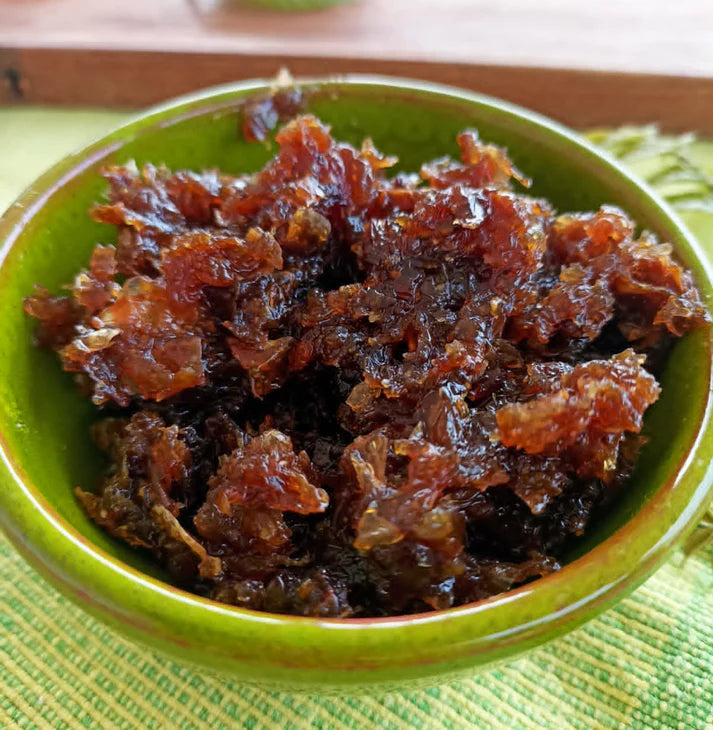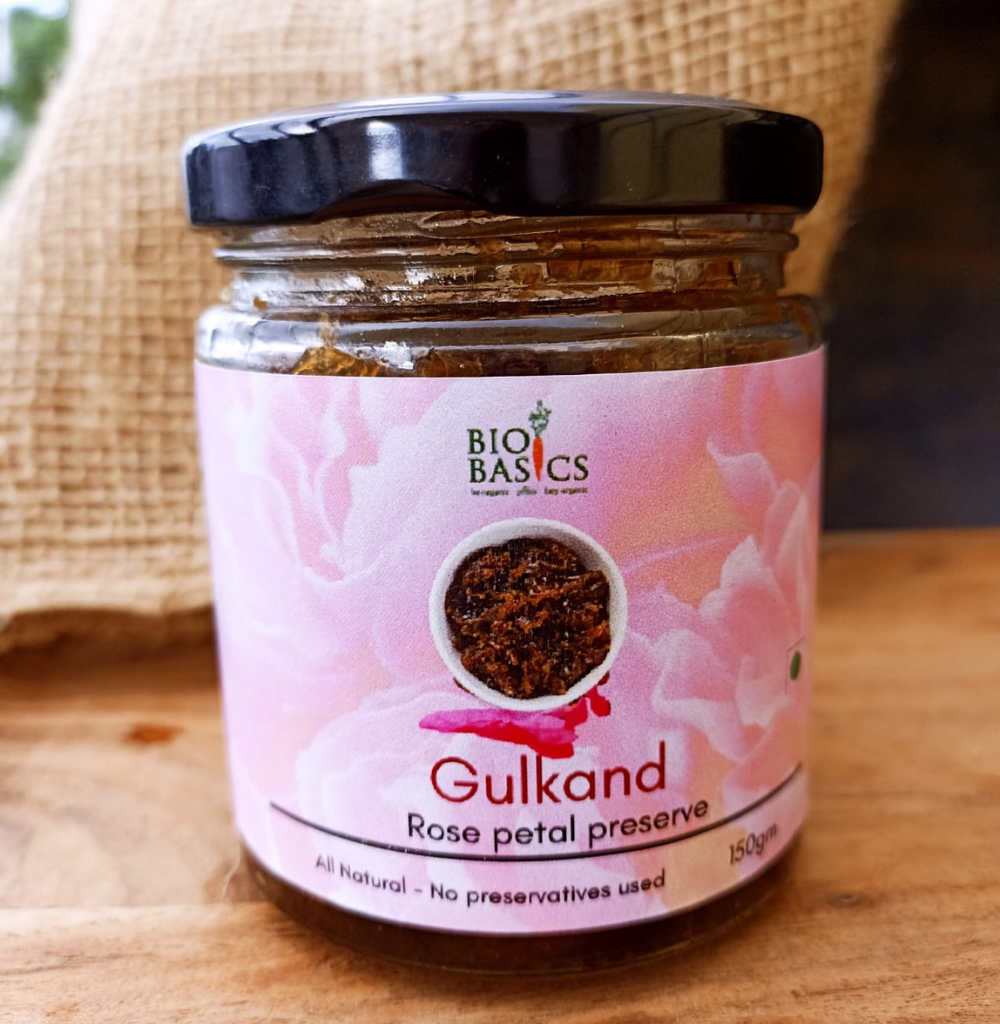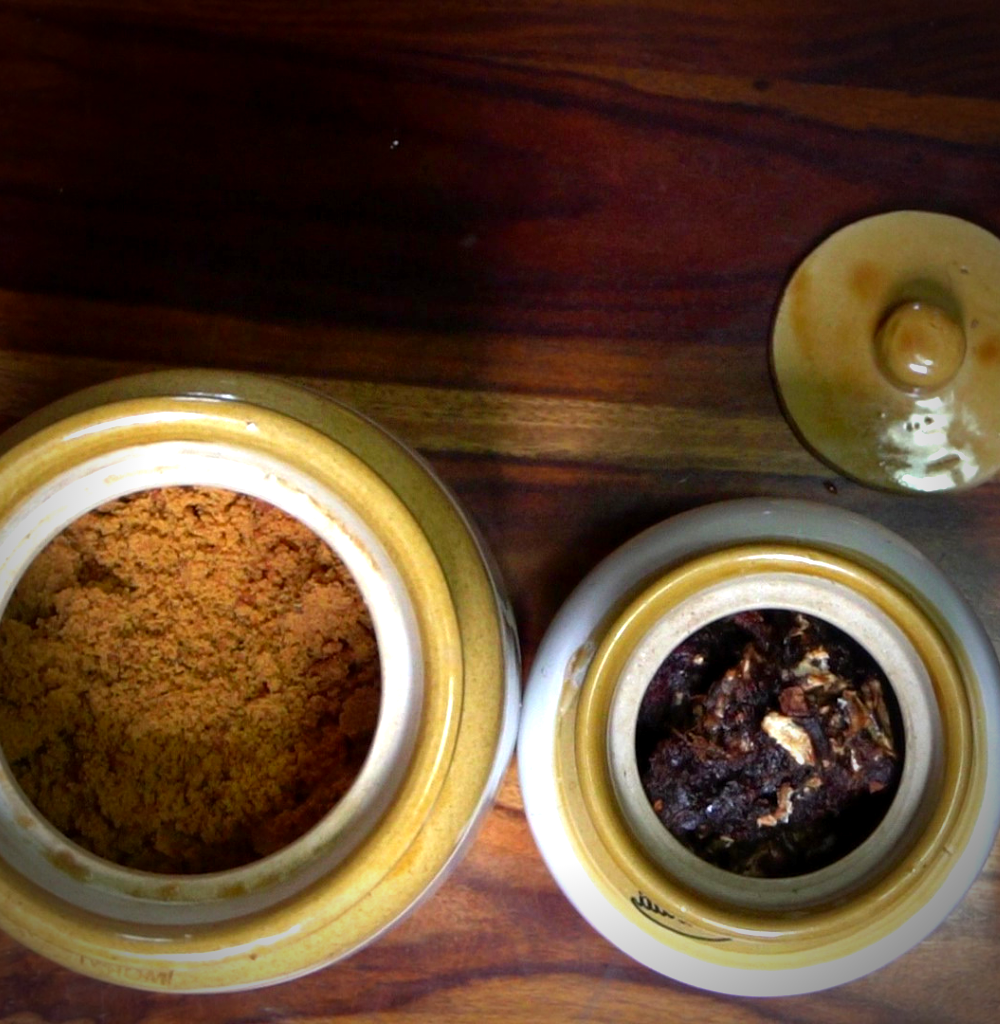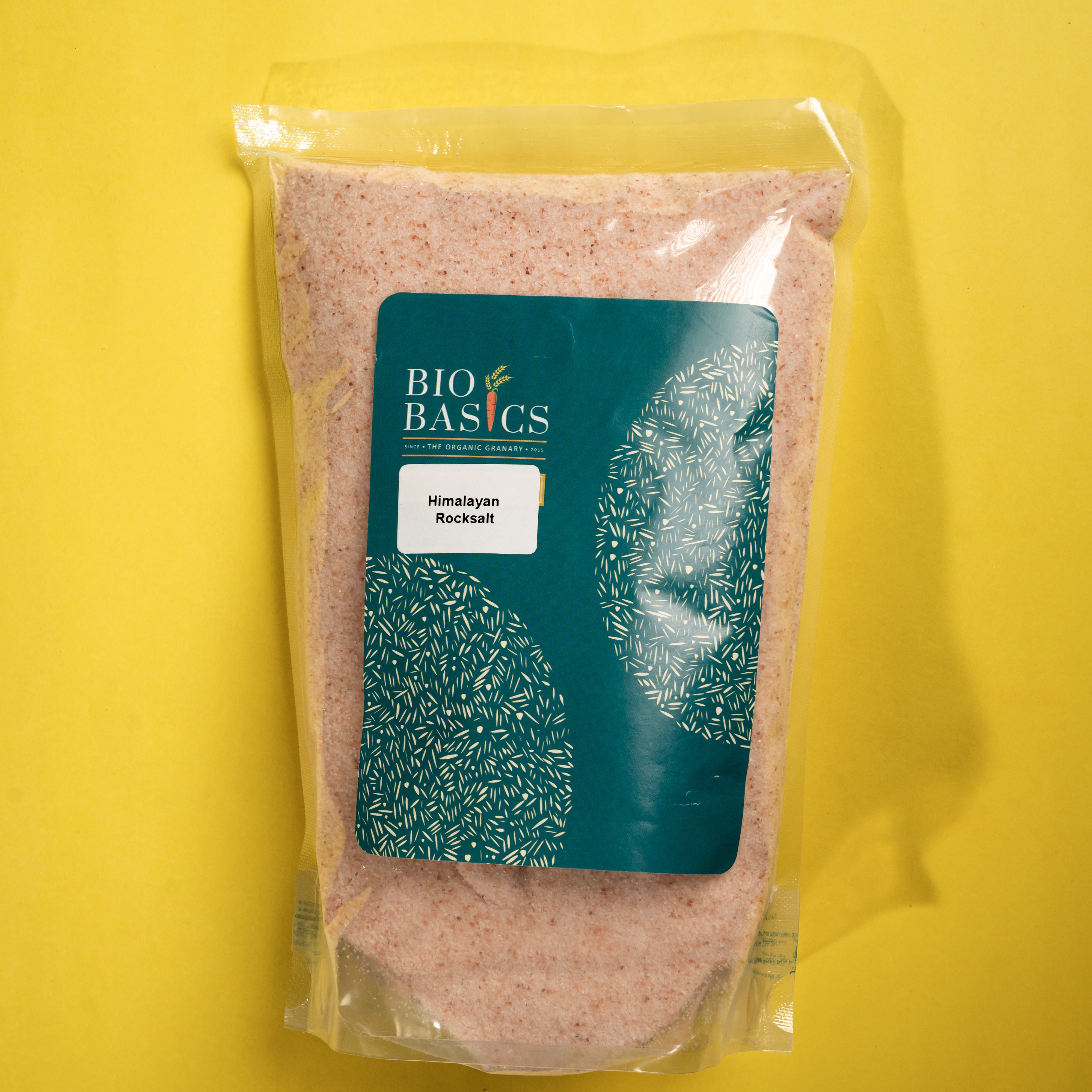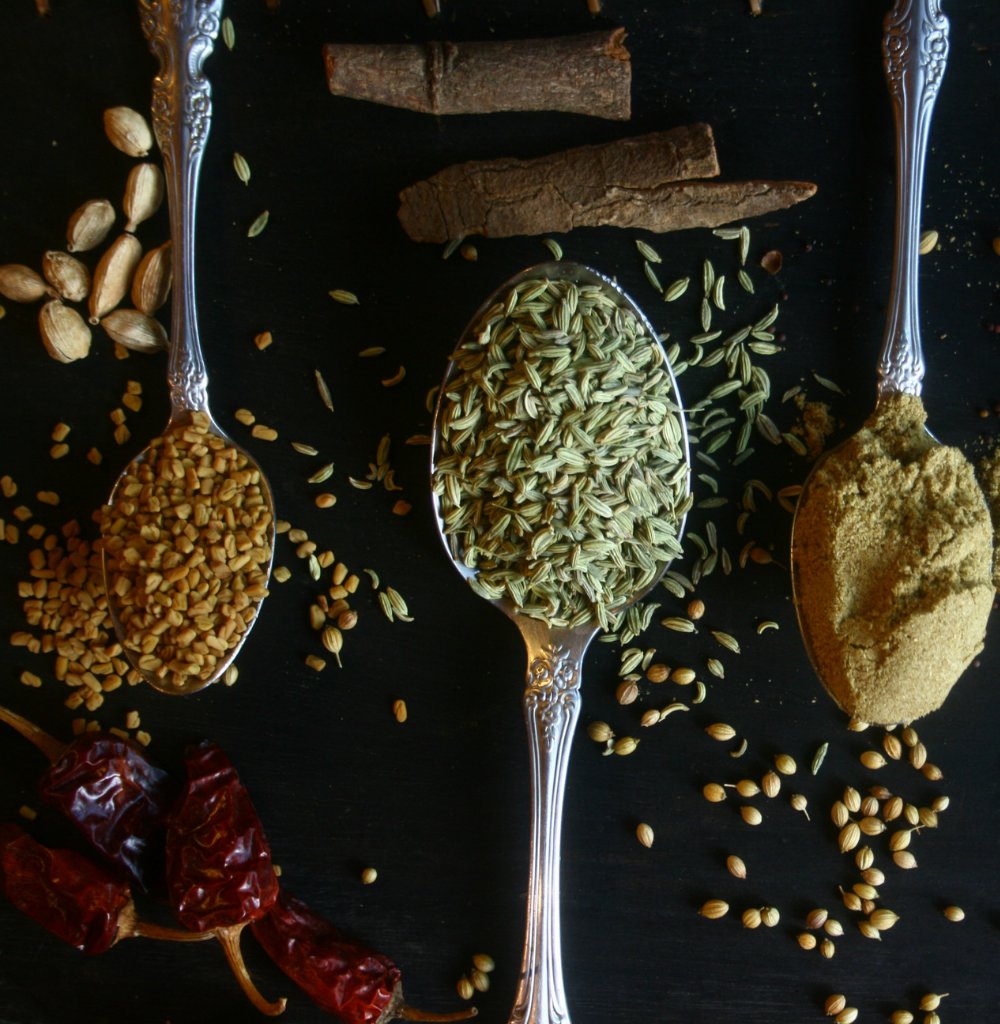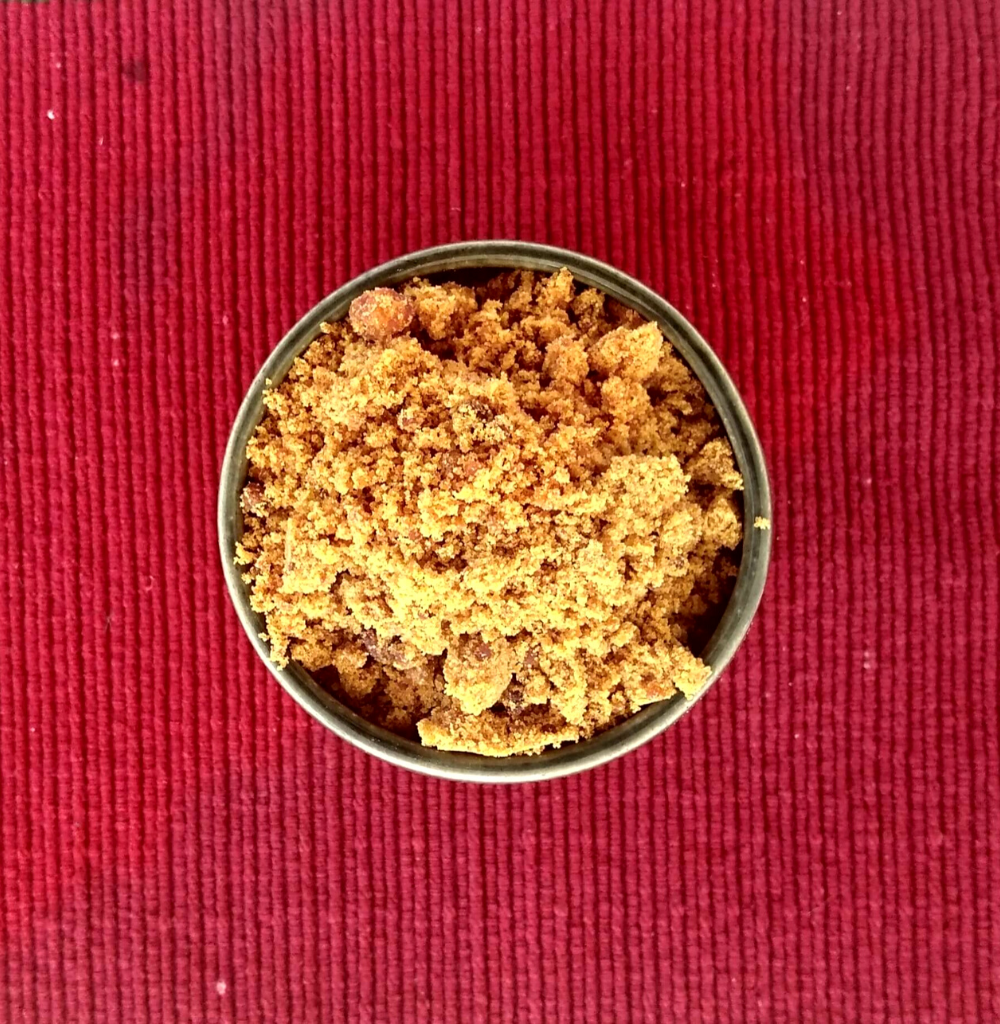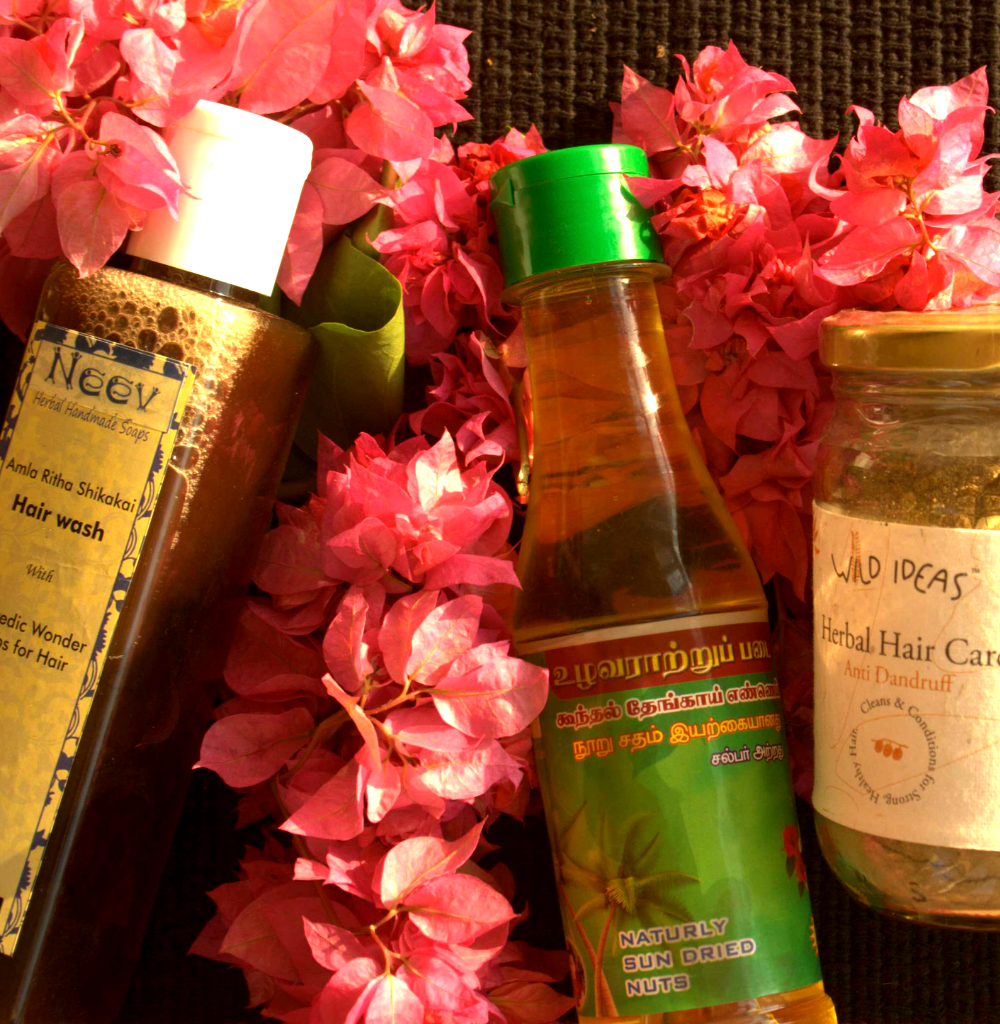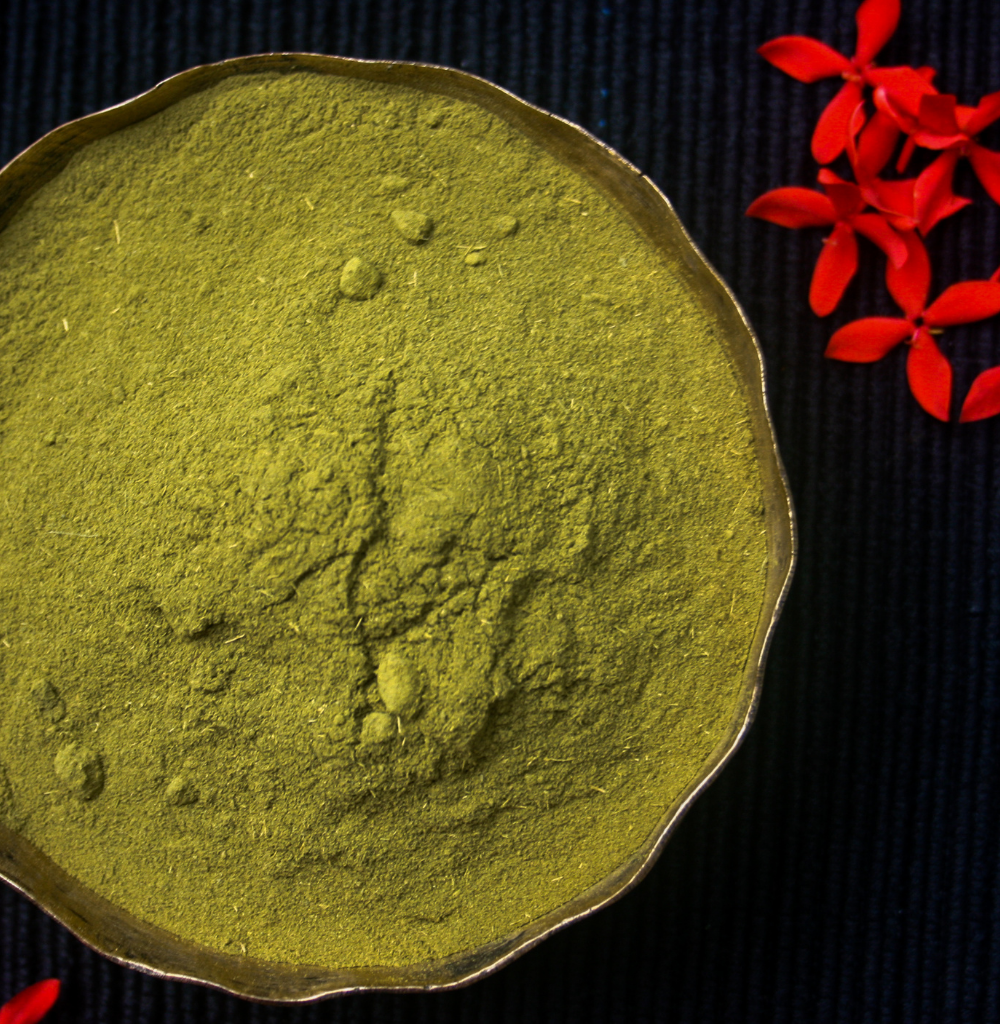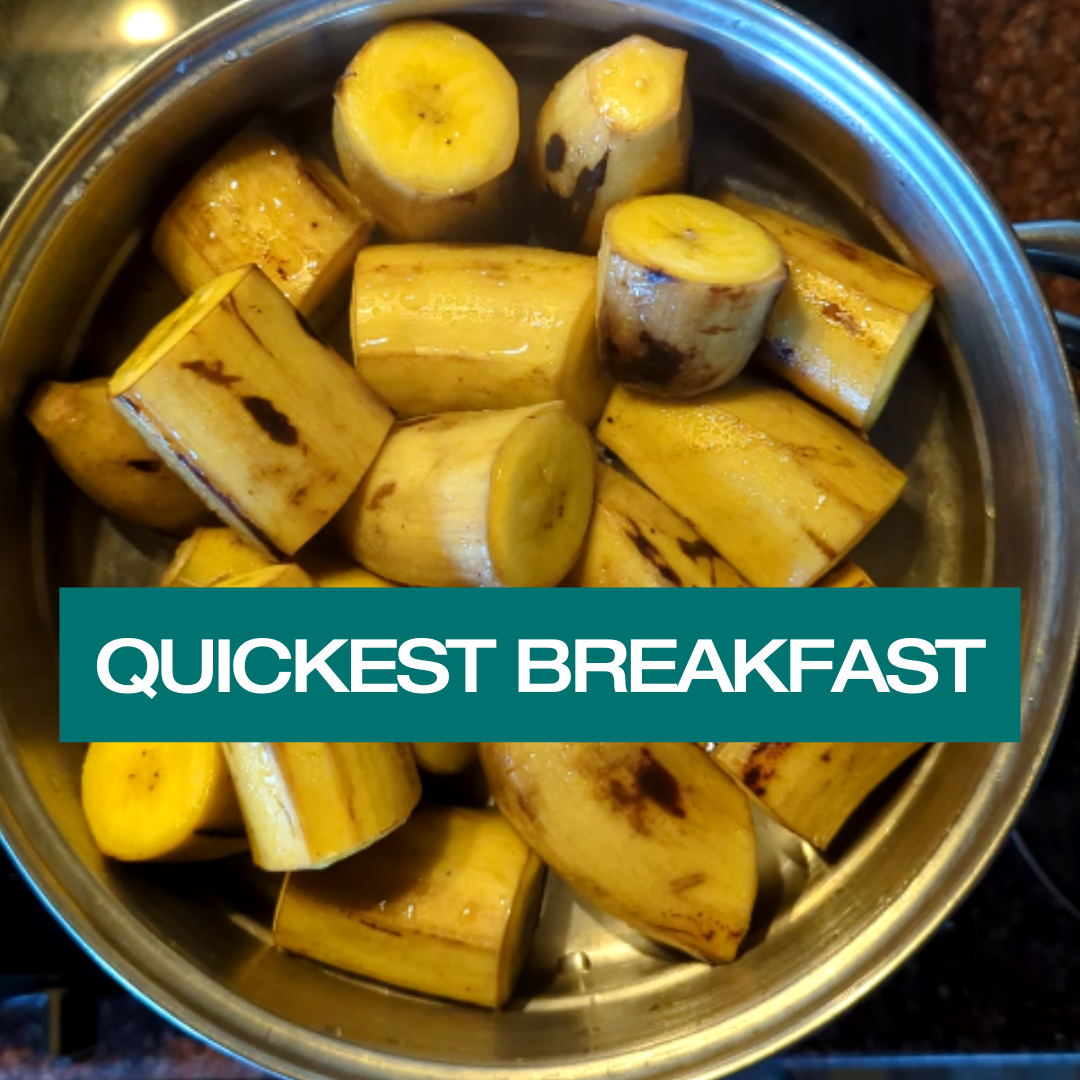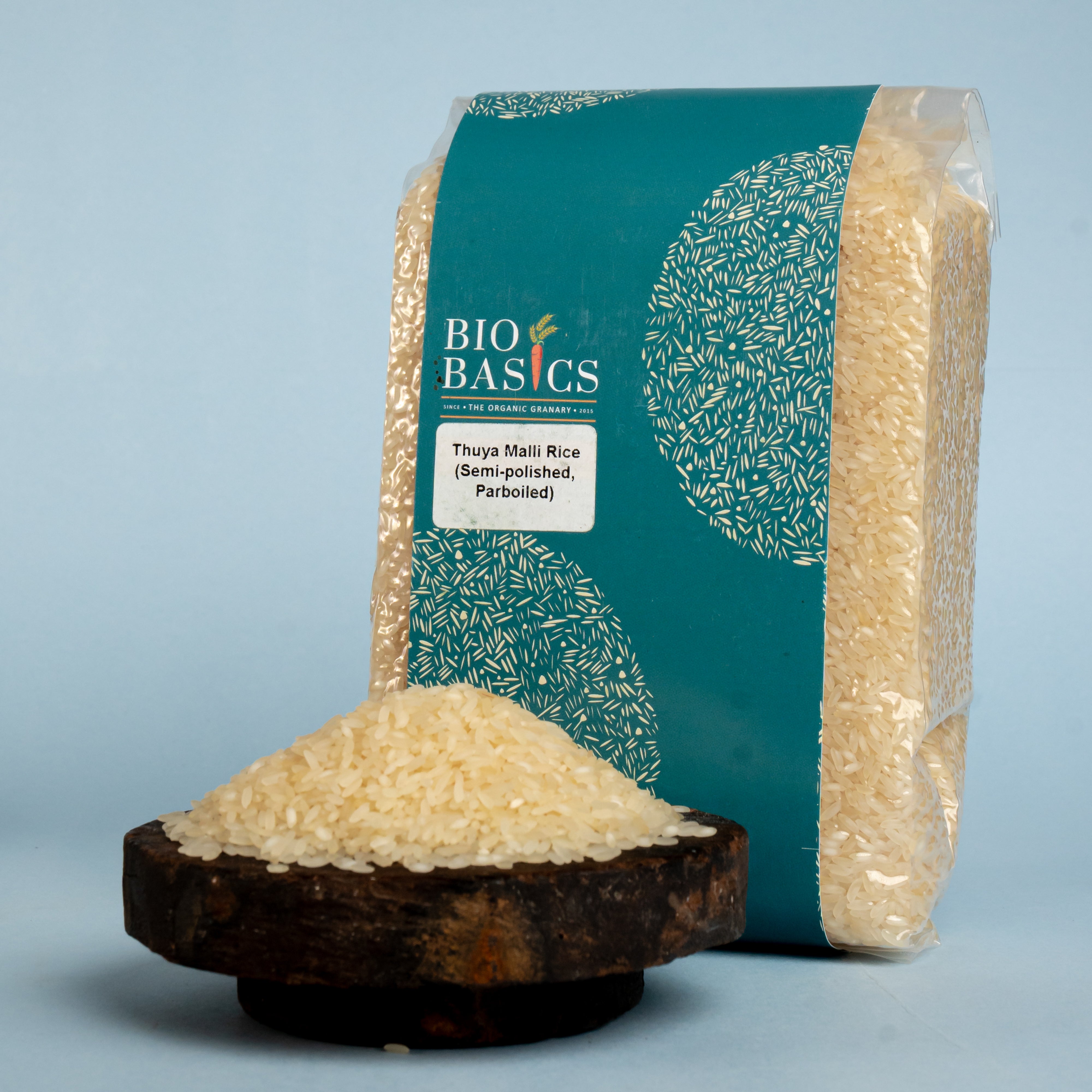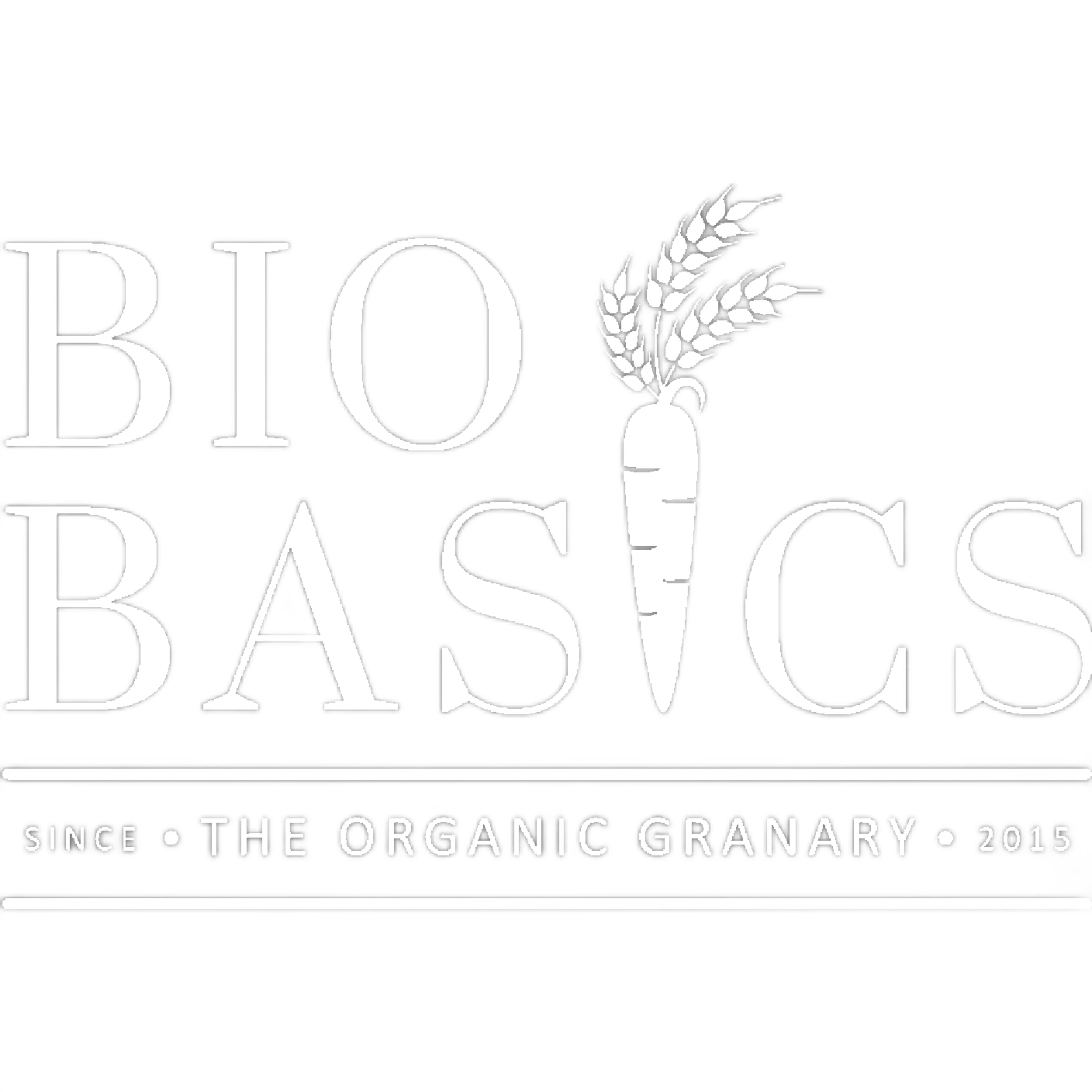
Kannan sets up the flowers, bananas, and bunch of the paddy in front of the granary on the auspicious day of the month of harvest, to perform the Nera puja. With all the labourers present, he chanted ” nera nero nera, vallam vatti nera ” asking the gods to fill ( nero, nara) the vallam (the rowing boat the holds of which used to carry the paddy to the mills or vallam (jaggery)can also be the large bamboo baskets used for storing rice, we are not sure of the reference), vatti ( the basket in which paddy grains are filled up).

After the work, the wait and the weather, it is time for the harvest. The first harvest of the season is called “kanni koyithu” in Malayalam. Like the nera puja every region has its pre-harvest ritual to invoke the gods. Organic paddy farming can work only with hard work from the farmer, nature’s bounty and blessings from the natural forces.

Keenly watching the fields through the season, the organic farmer and his team identify the patch from where they want to harvest for seeds, generally from the middle of the field, where it is growing well and chances of cross pollination with other varieties is low. Paddy for seeds is harvested by hand to avoid damage to seeds. These sheaves of paddy are threshed separately, dried and stored separately.
A skill mastered by paddy farmers, mostly done by women, manual harvest requires considerable flexibility and dexterity and is quickly becoming a lost skill. It is poetry in motion. It has its downsides I am sure, like repetitive stress injuries.

A couple of days planting or harvesting in a paddy field will bring the best of us to our knees or flat on our backs – the sun beating down the back, knees hurting, the skin itching, the feet dirty and the day being never ending… and finally the bliss when you hit the bed.
The machines have taken over harvesting in most of South India – large combine harvesters, winnowing machines etc. The human power capable of doing paddy farming is dwindling faster than it takes to read this piece.

The large harvesters go around the fields eating up the plants and spitting out the grains and the grass. Nothing will go to waste, the grass becomes hay to feed the cattle, the organic grains are for us. The stubble will be eaten by grazing cattle and the rest is ploughed back in along with other natural manure. These are integral inputs for an organic paddy farm.
I am reminded of Nammalwar Ayya’s (the guru of organic farming in Tamil Nadu ) famous words, which he would unfailingly repeat in every gathering : Adi Kaatukku (bottom for soil) Nadu Maatukku (middle for cattle) Nuni Veetukku (top for home).
The work doesn’t end with the harvester, it is only the beginning of processing.
In Kerala, with the south west monsoon just moving out, rains play hide and seek during the harvest season. The farmers and the farm workers spread out the seeds to dry, but are ever ready with the tarpaulin and covers if the rains arrive. Kannan and team watch over their drying paddy with hawk’s eyes. They can’t take their eyes off and risk losing the paddy through spoilage.

To ensure that all the paddy in one lot uniformly achieves this takes effort. The women and men walk around the drying yard with rakes sifting and moving & then moving and sifting the paddy around so that every last grain dries to come to the desired level.

They keep checking for the exact level of moisture (14% is what makes them happy) before bagging it all into sacks. Only this will ensure low level losses, remember organic paddy does not use any fumigation in the warehouses to protect the paddy from fungal attack or any pests.

Then the precious paddy moves into the granary, if there is one or into multiple bags to be stacked up from the bottom to the top in every space available…and the farmer family begins living around the paddy bags.

How does this paddy become rice to reach our plates? Watch this space for the next part
Devi, Bio Basics
